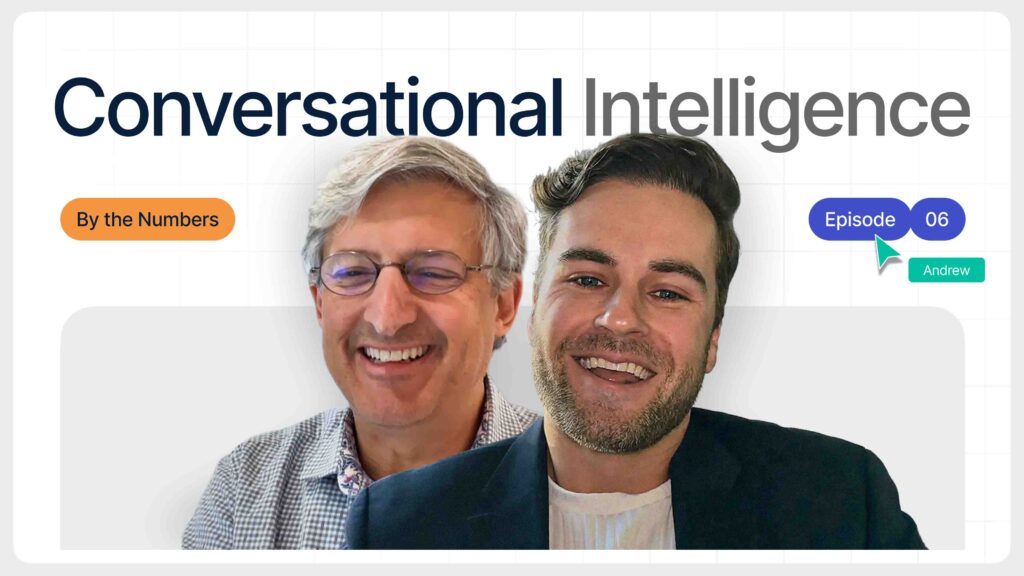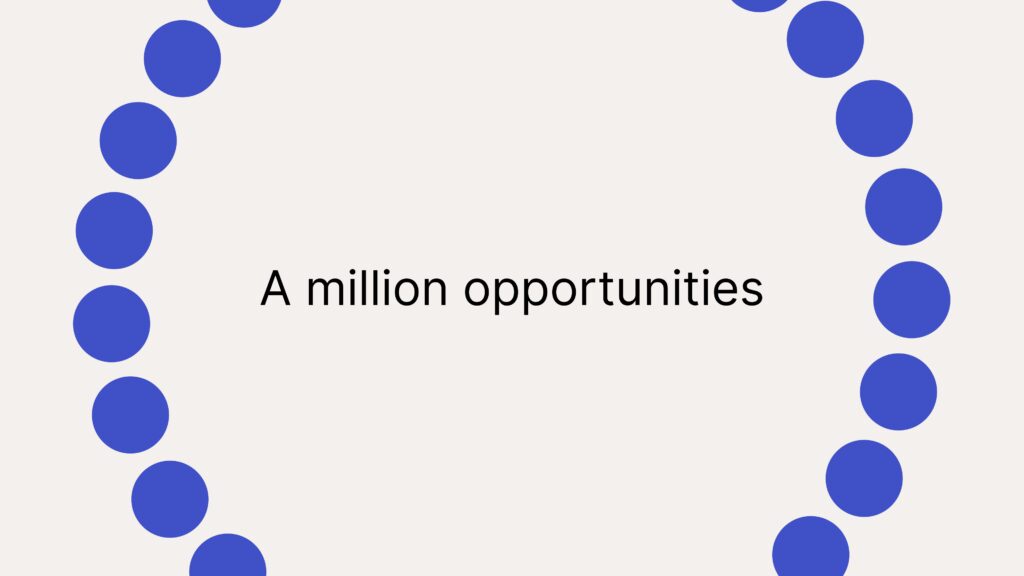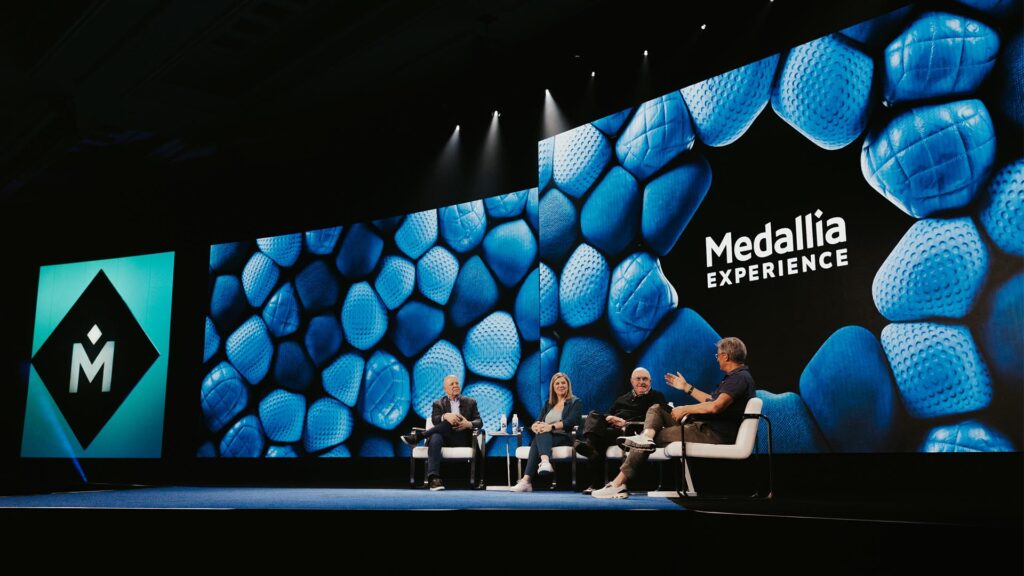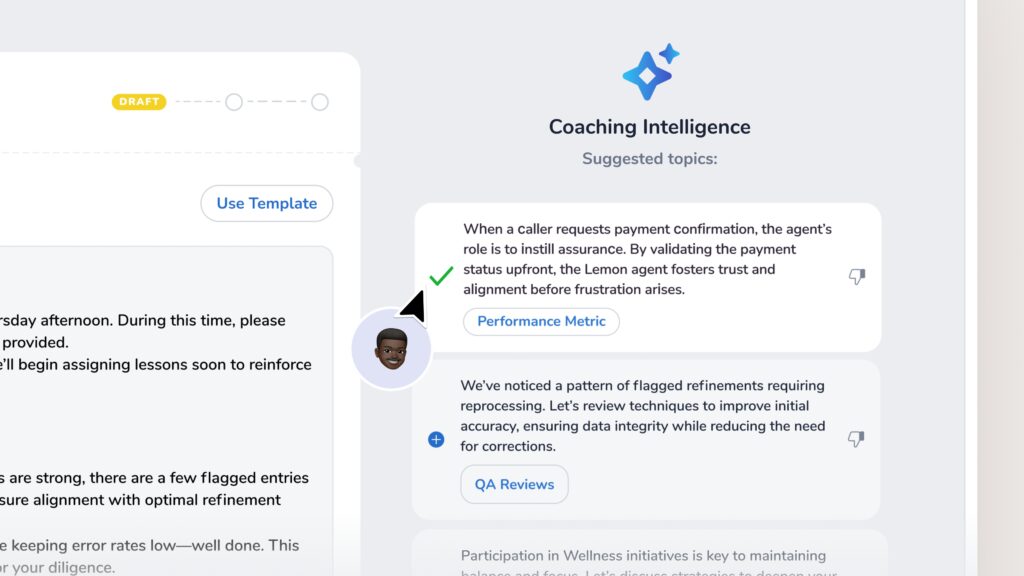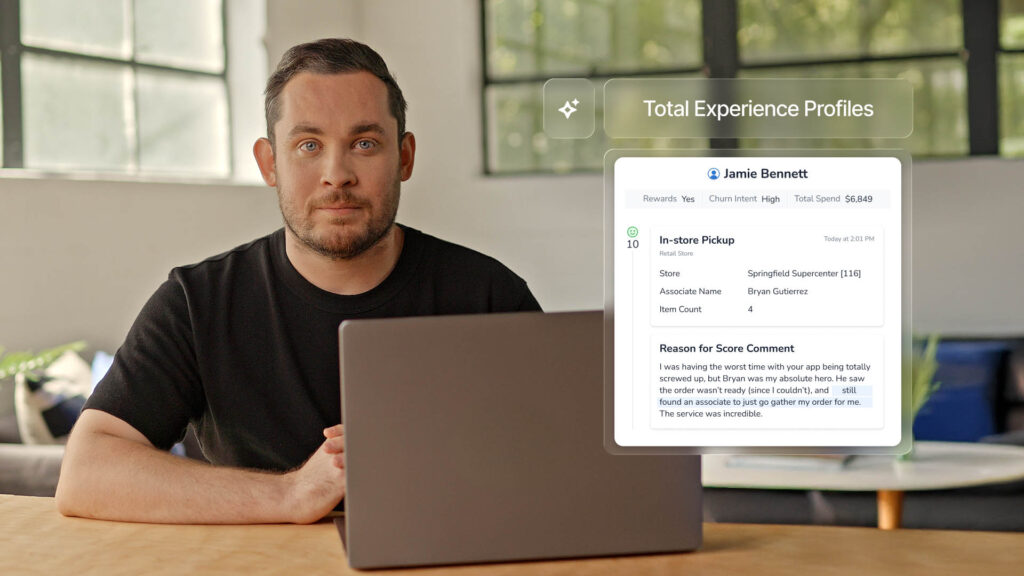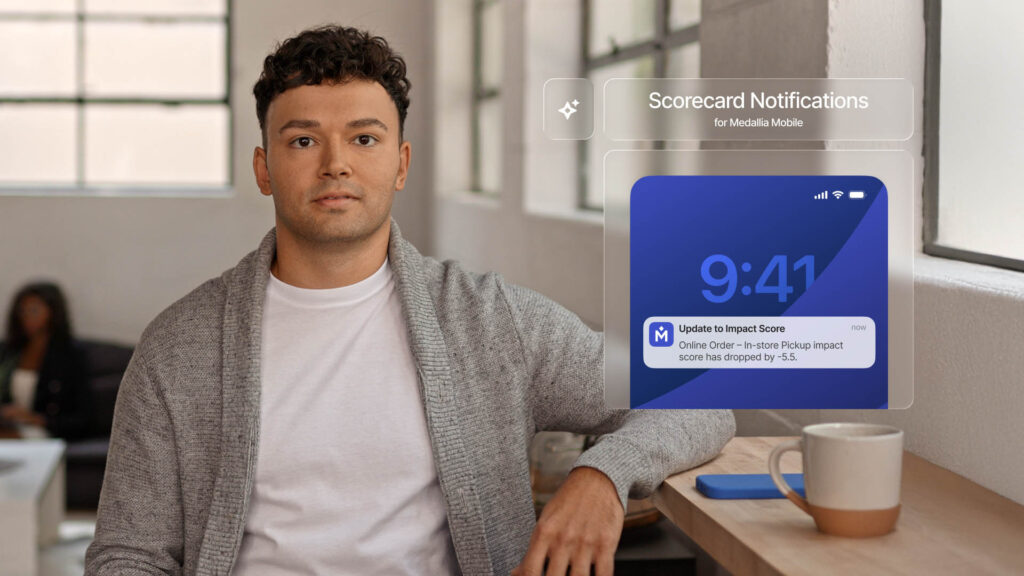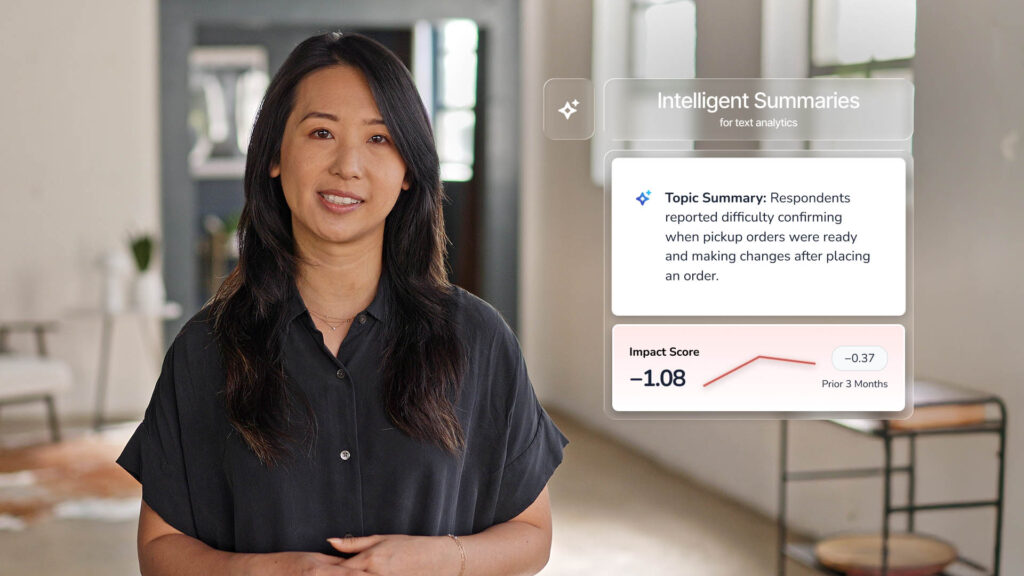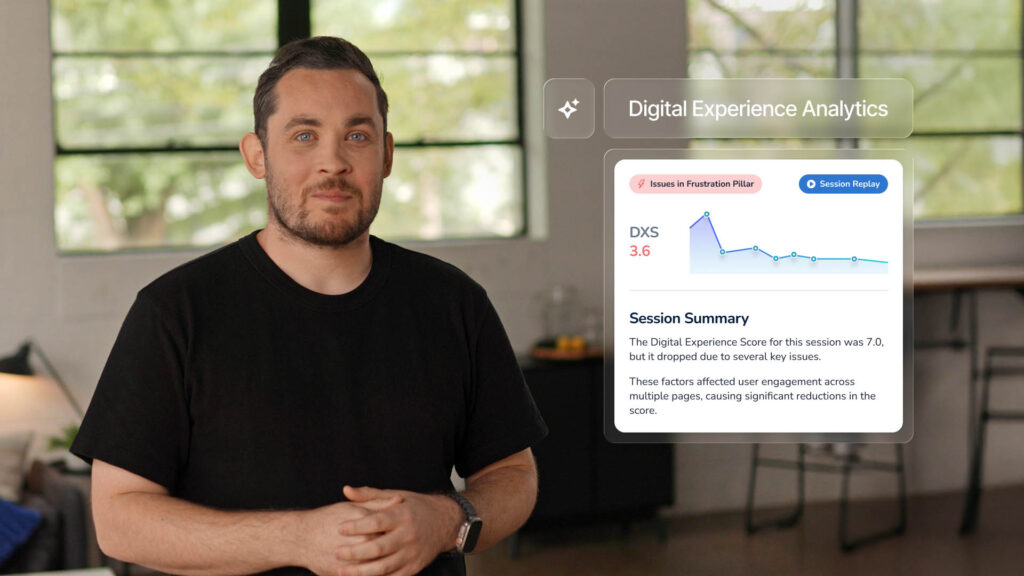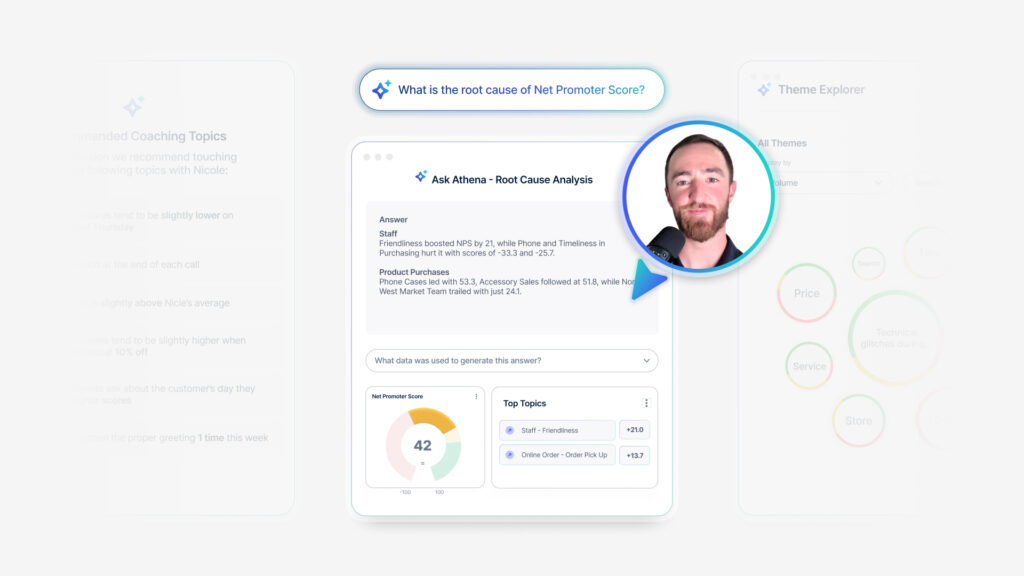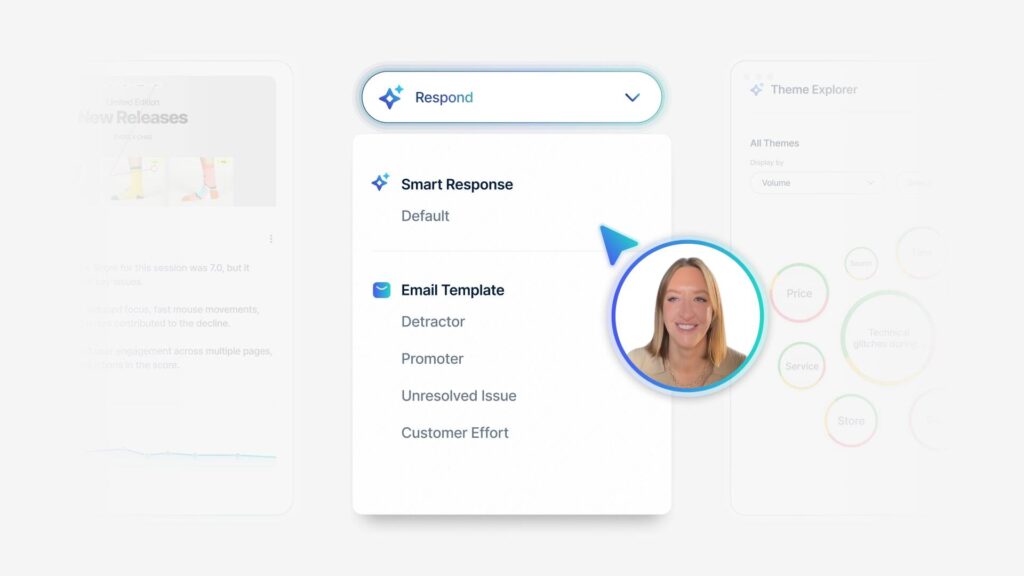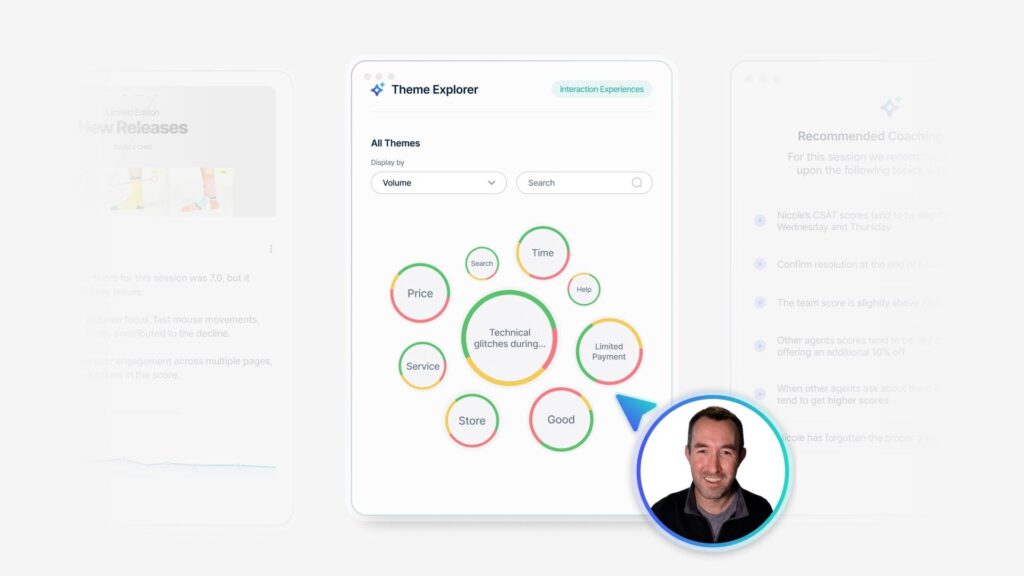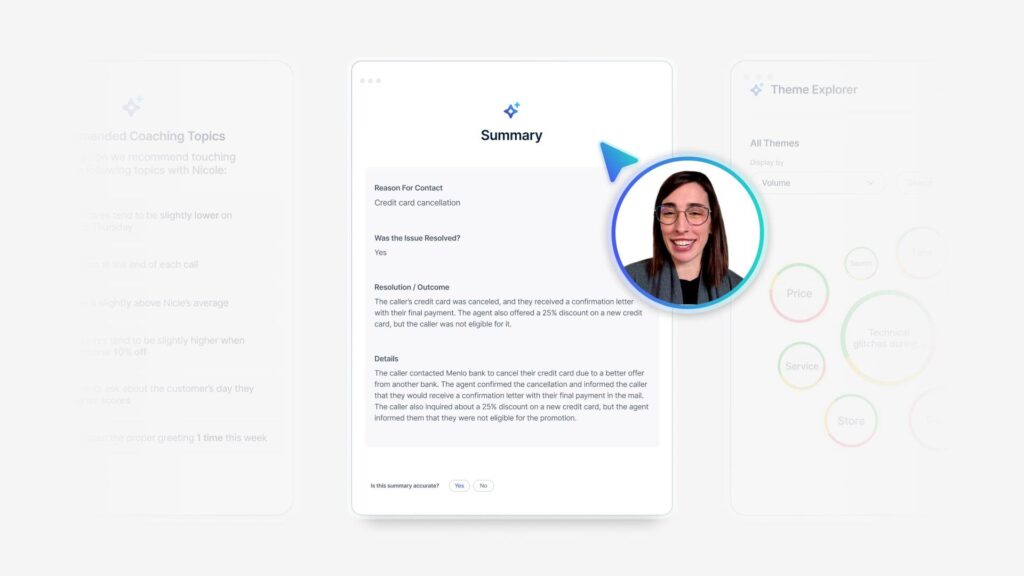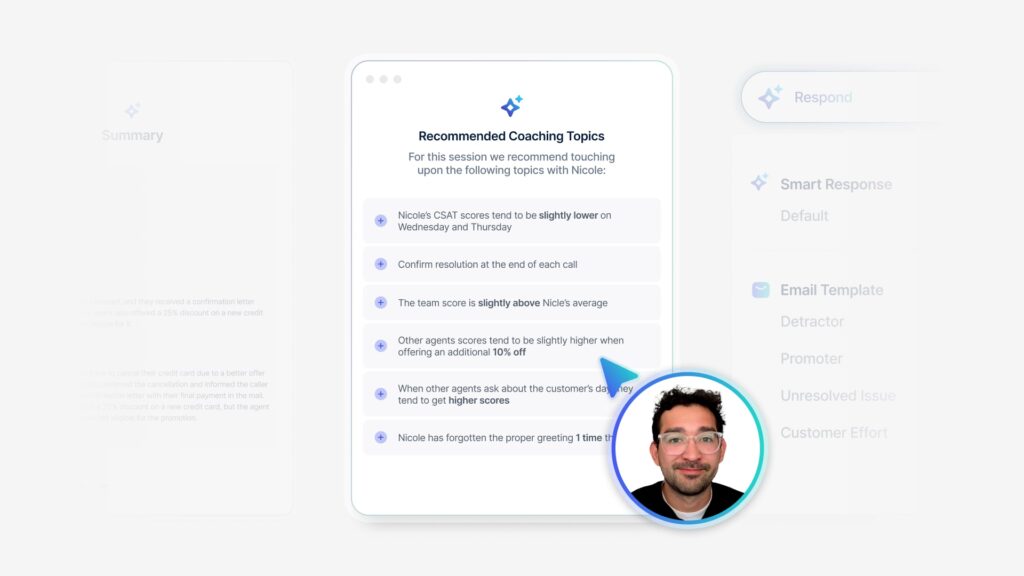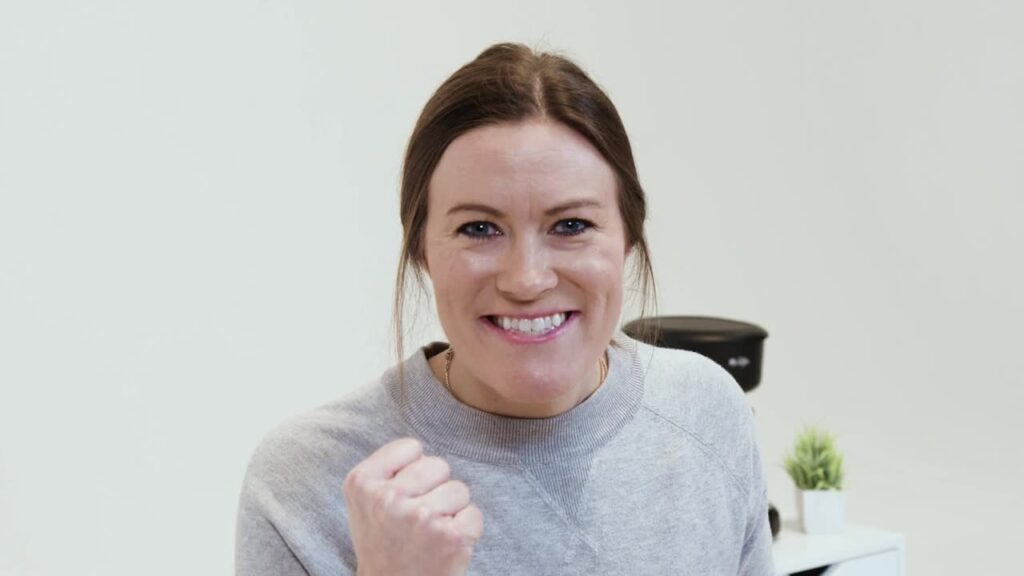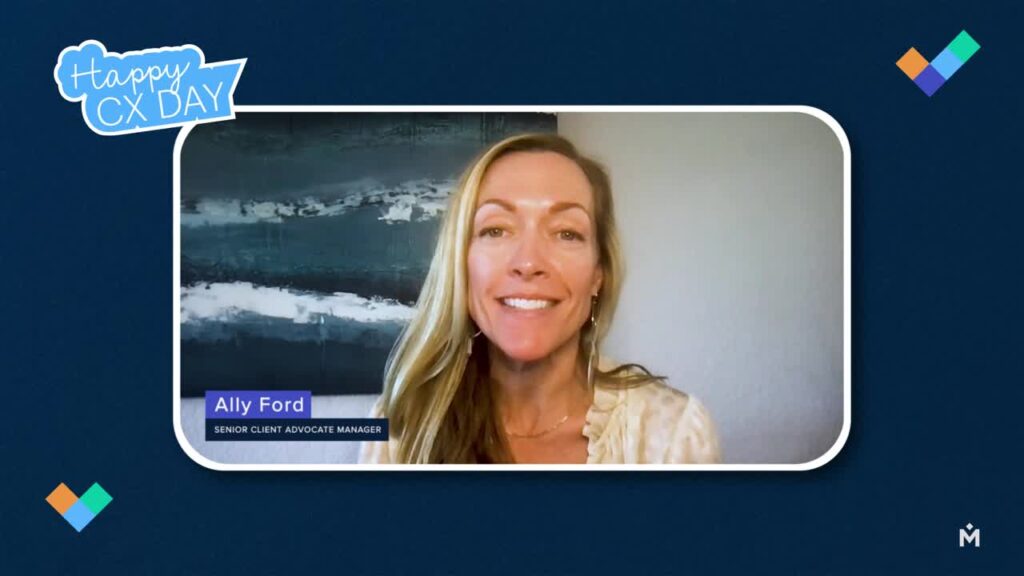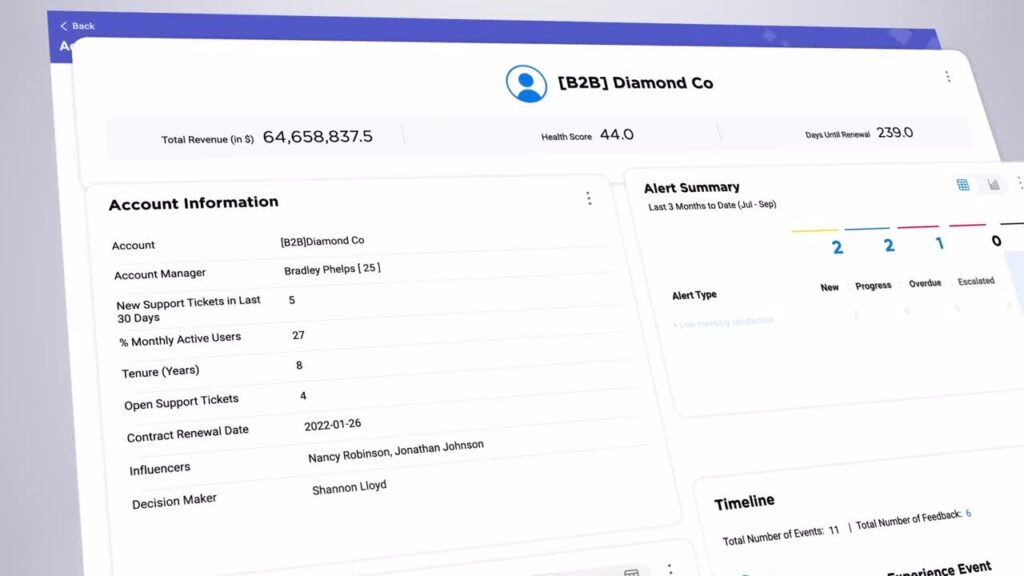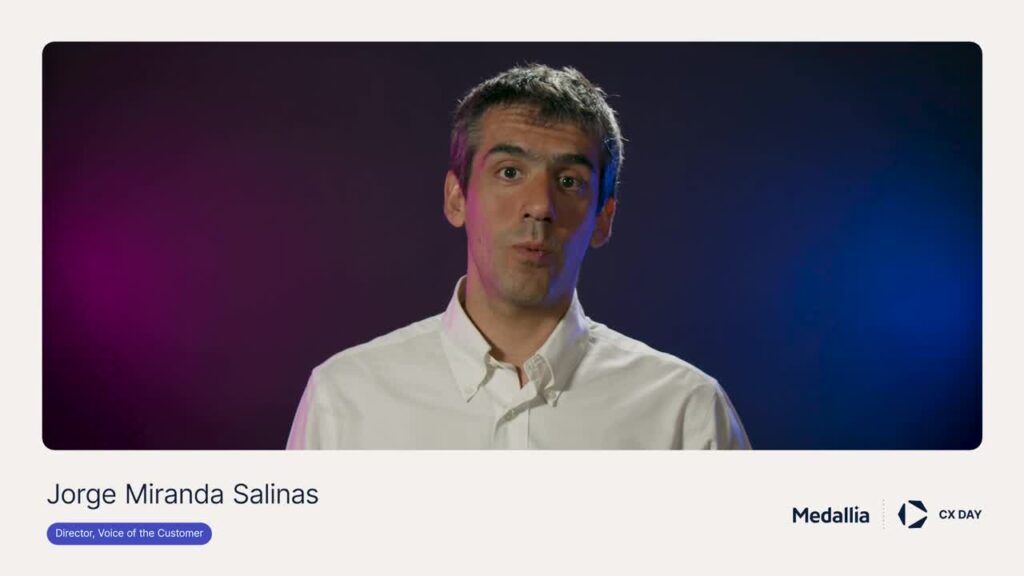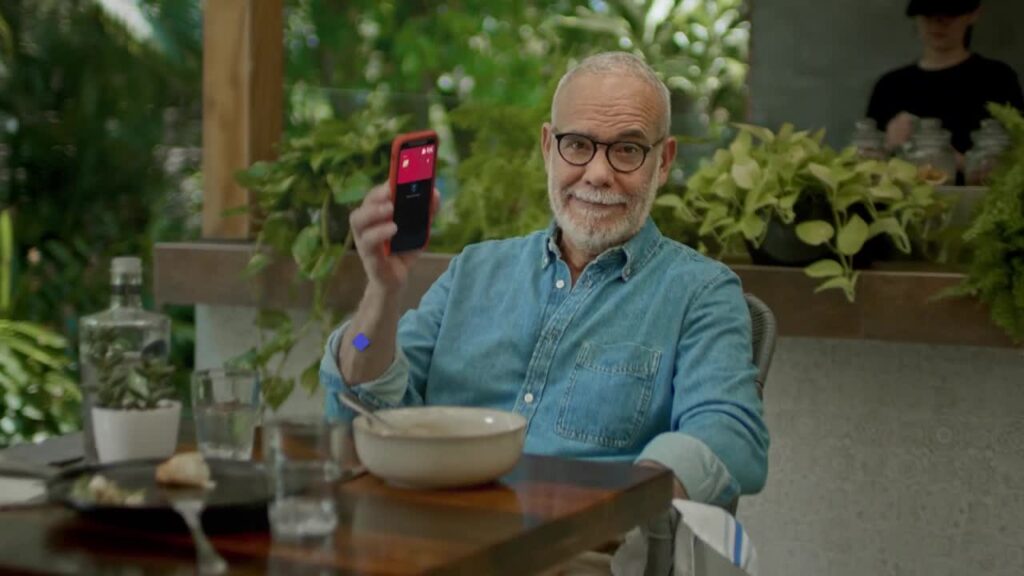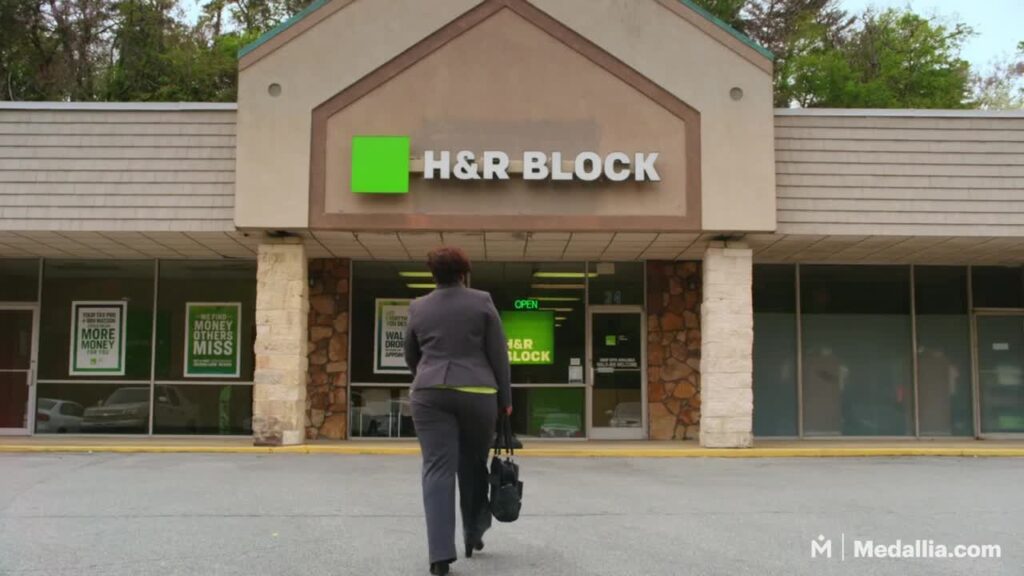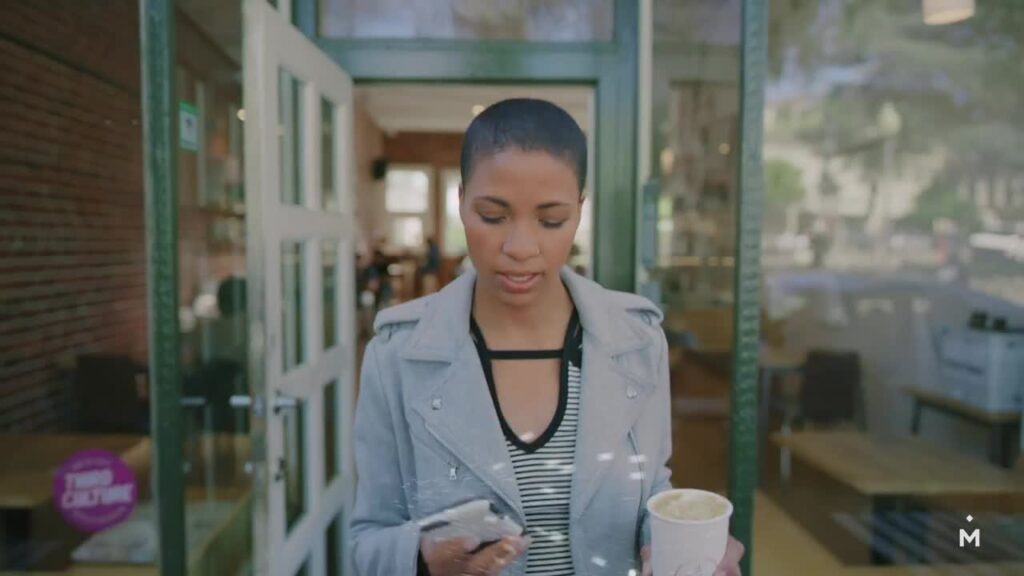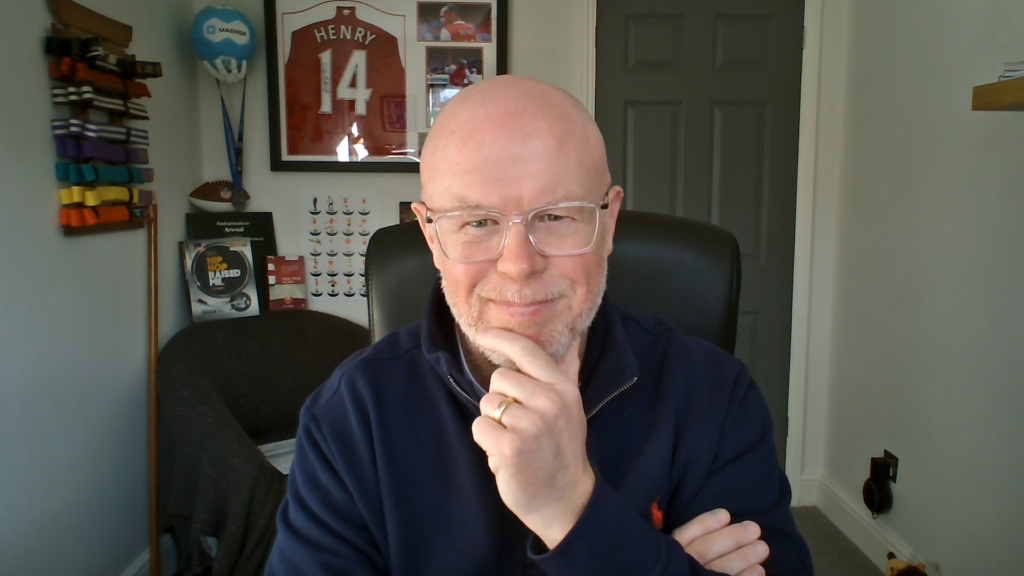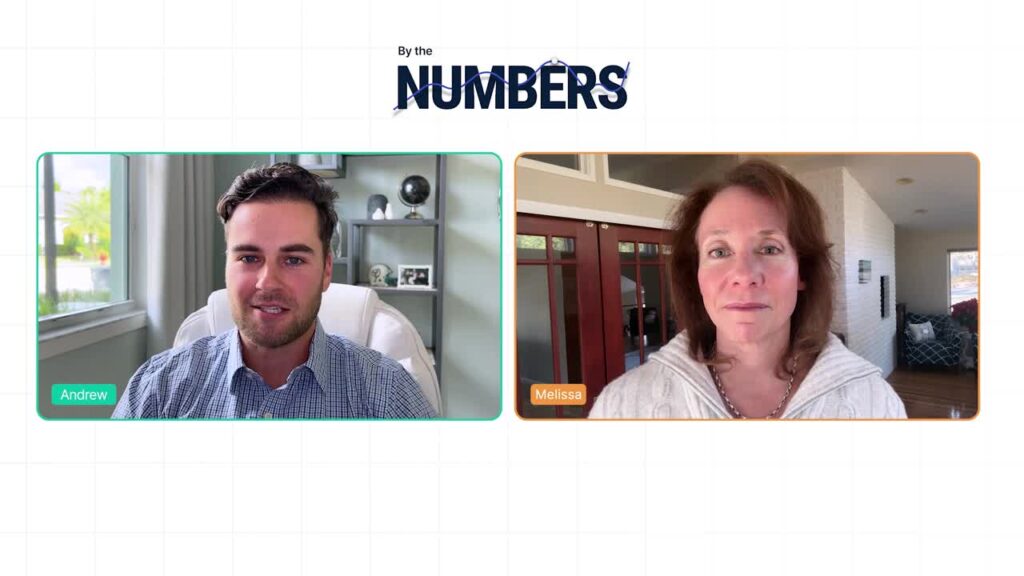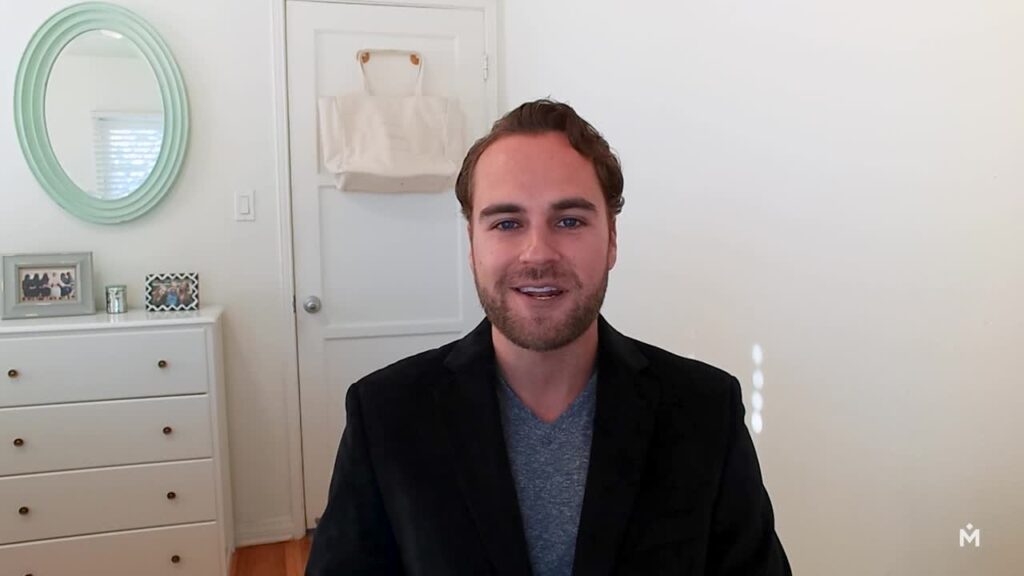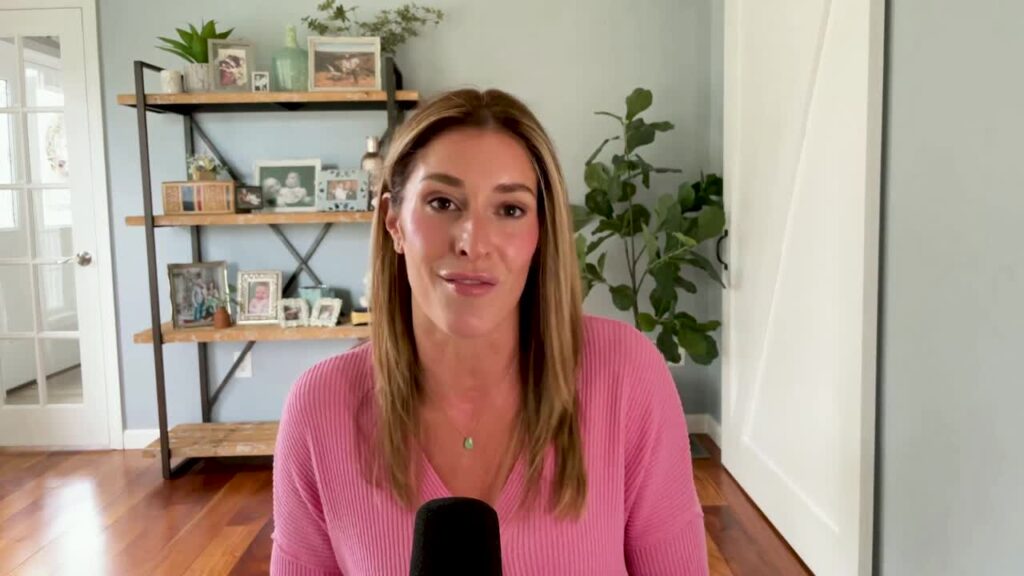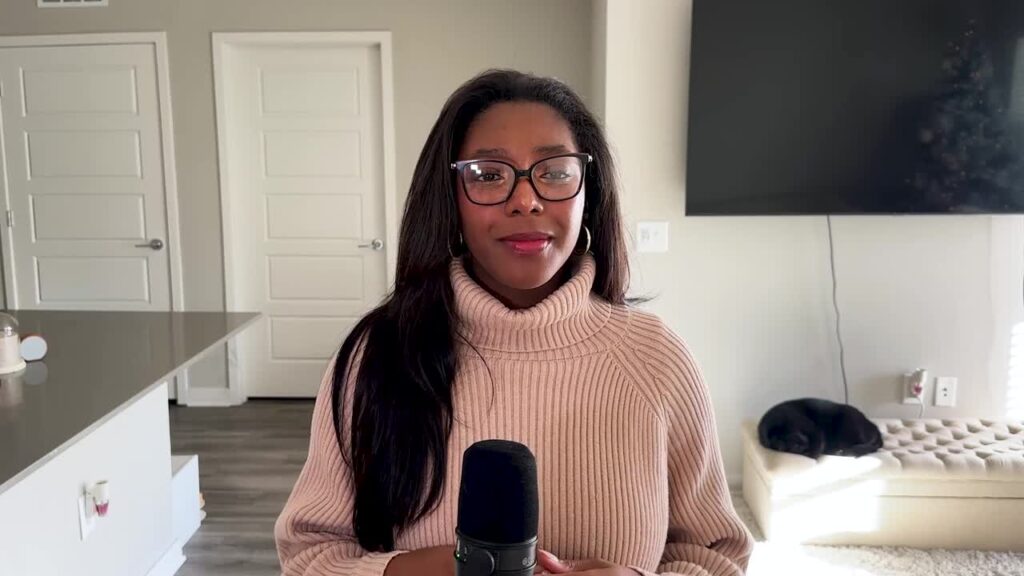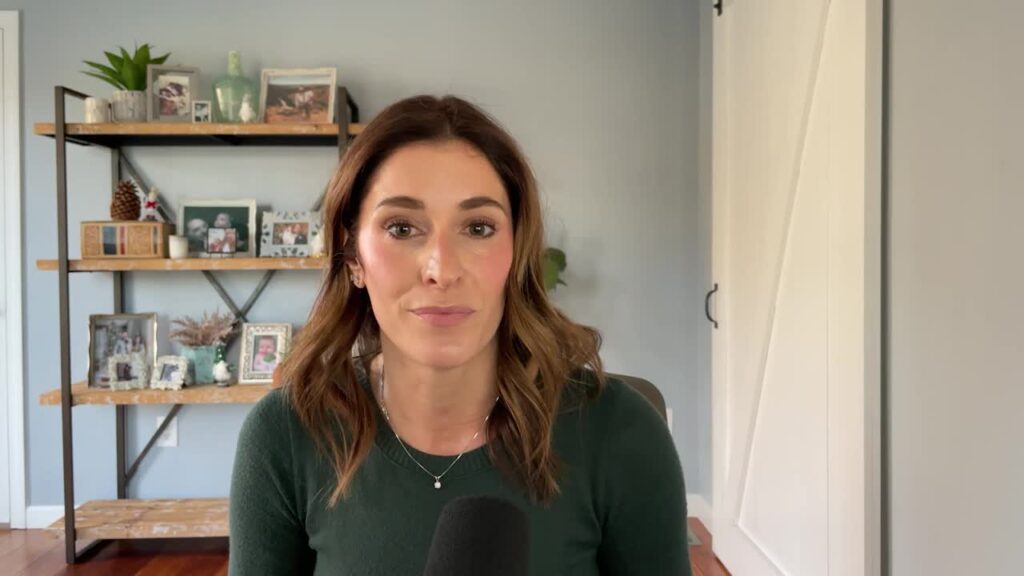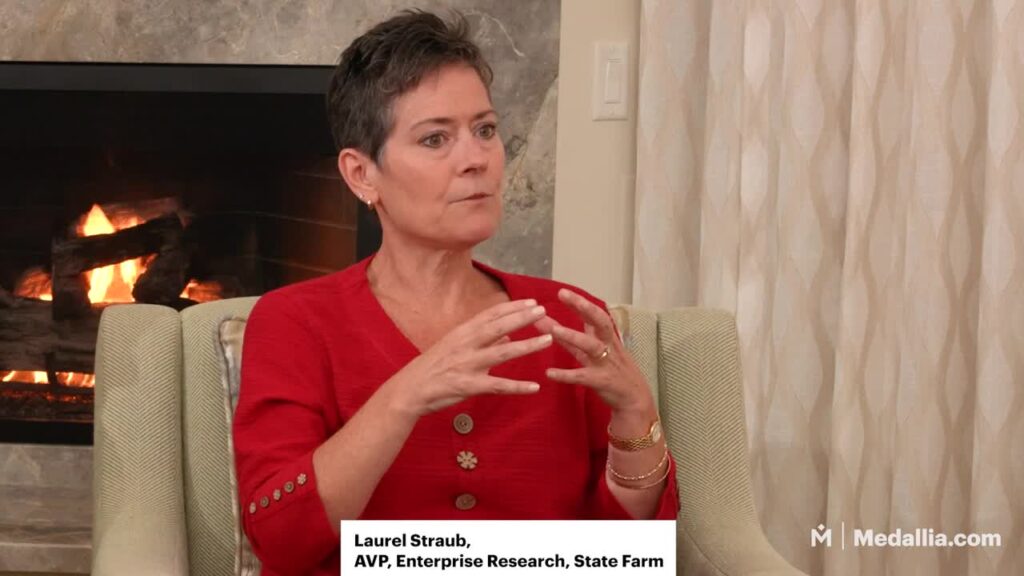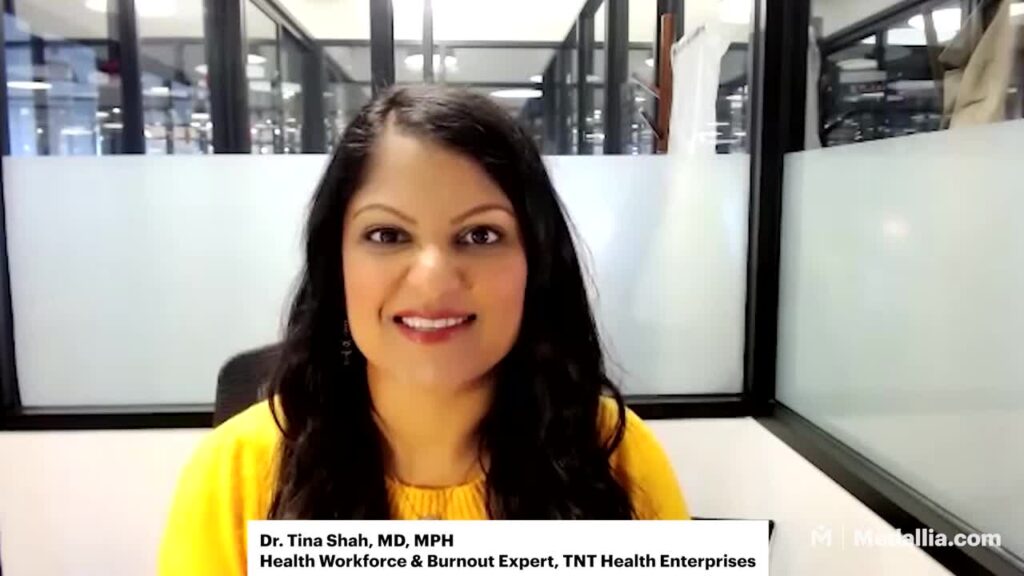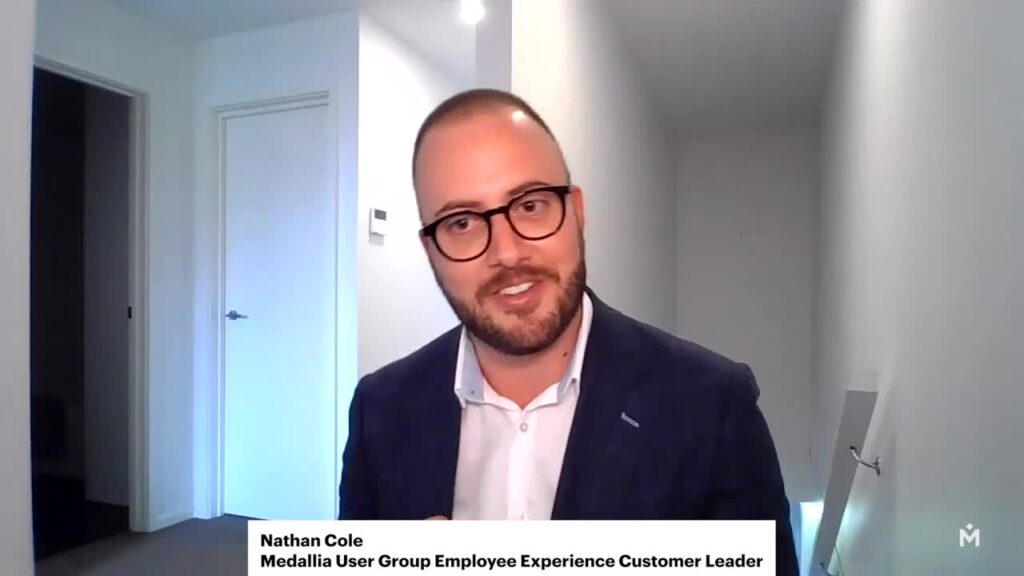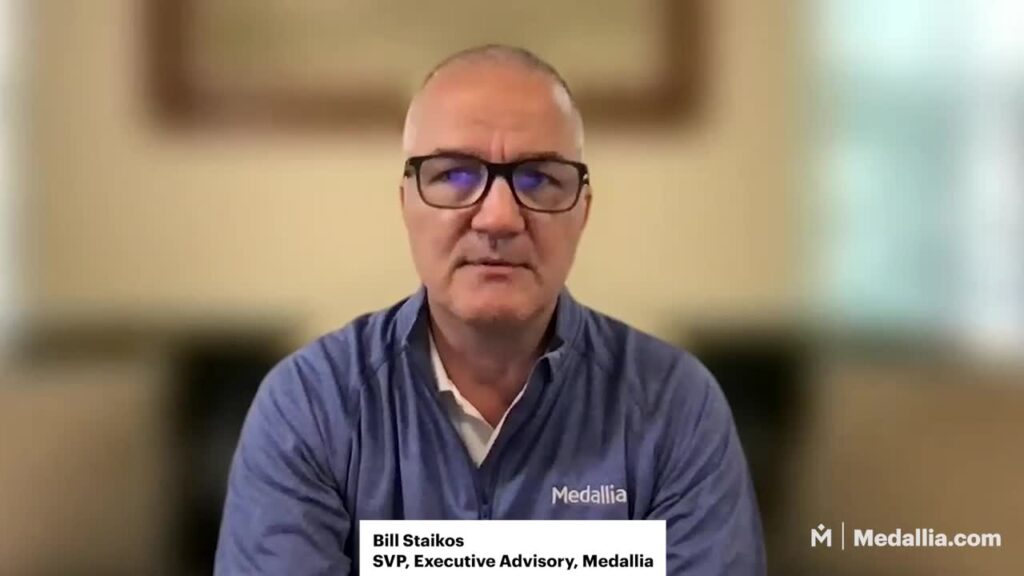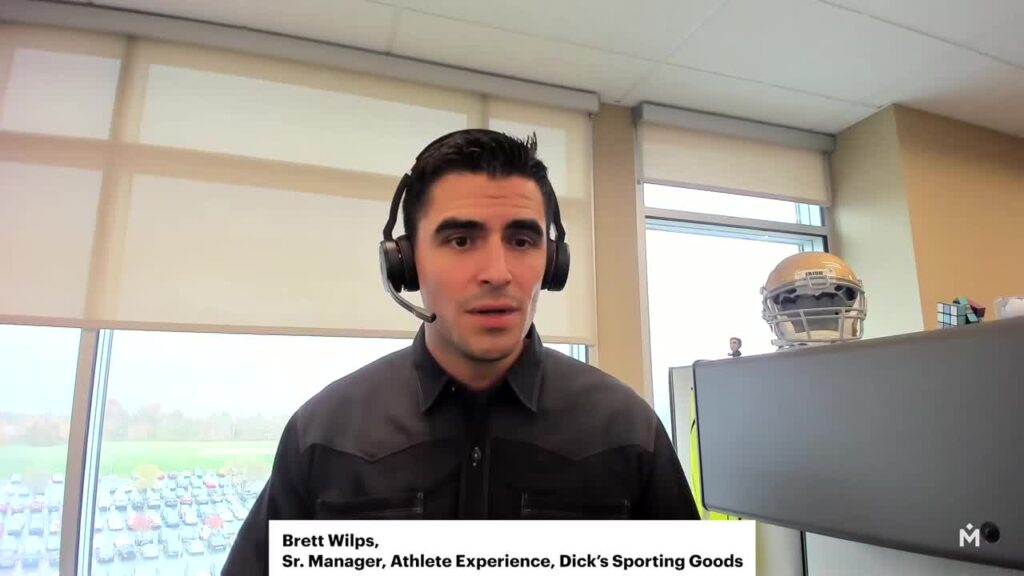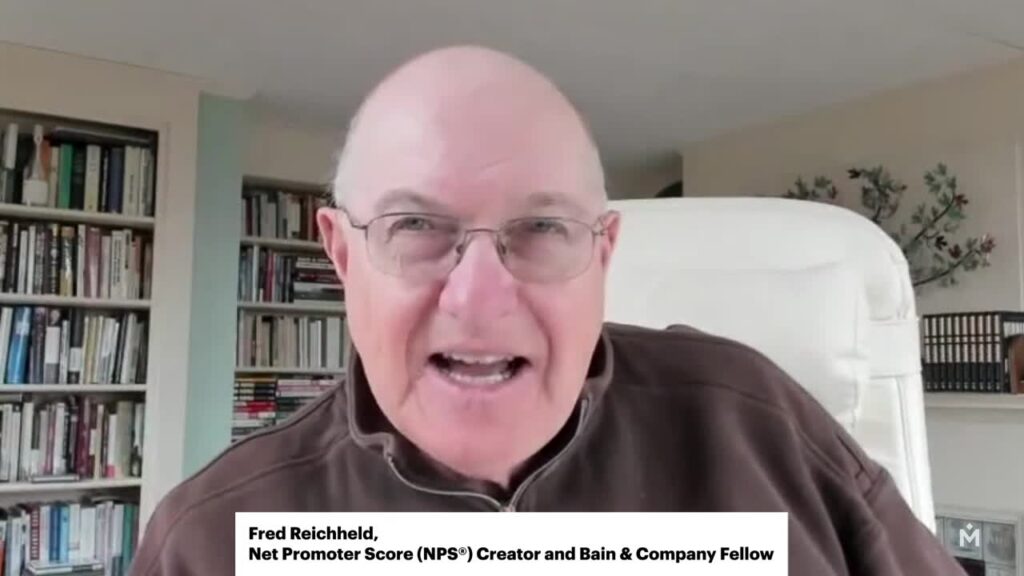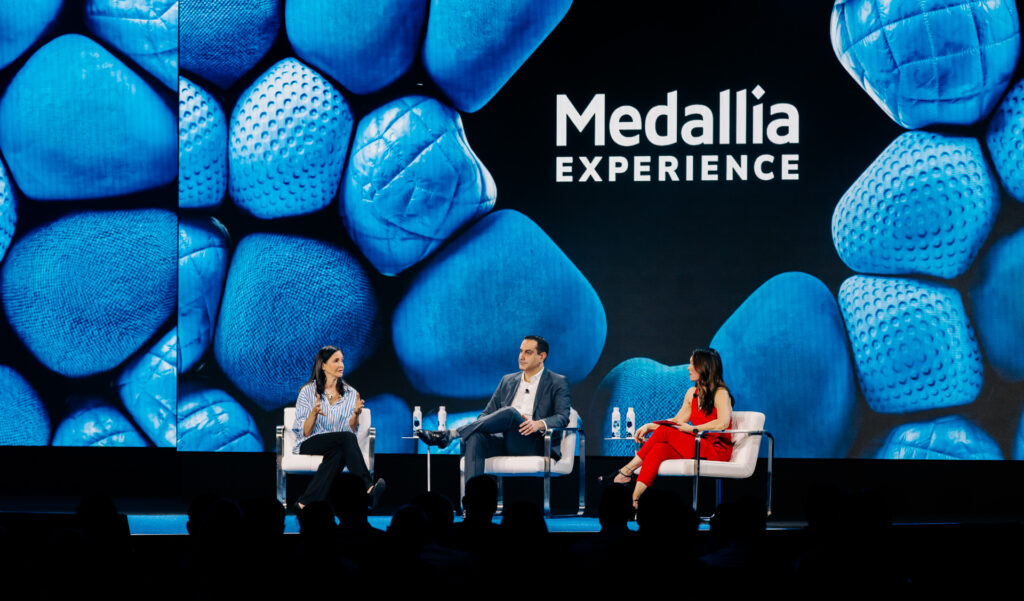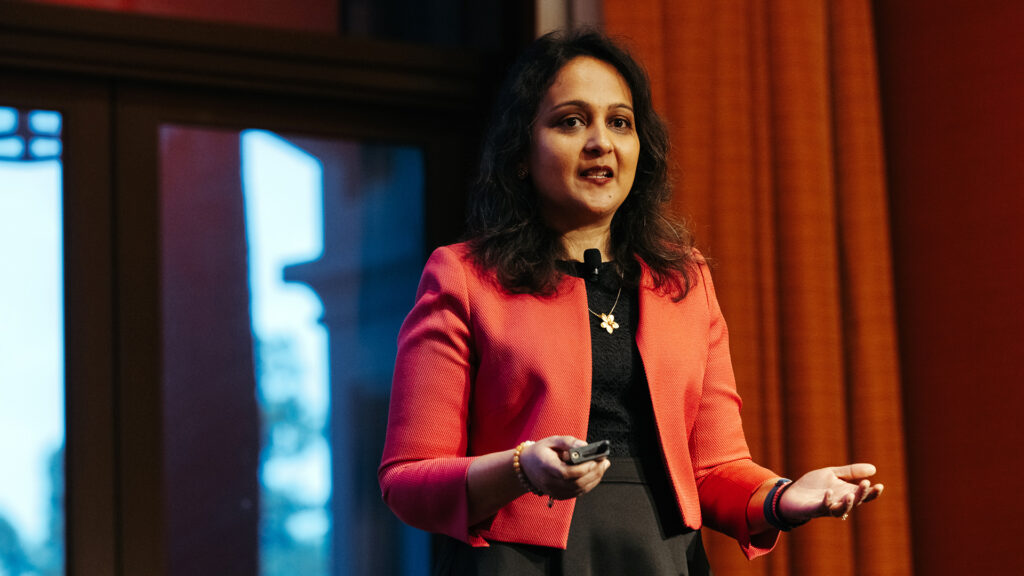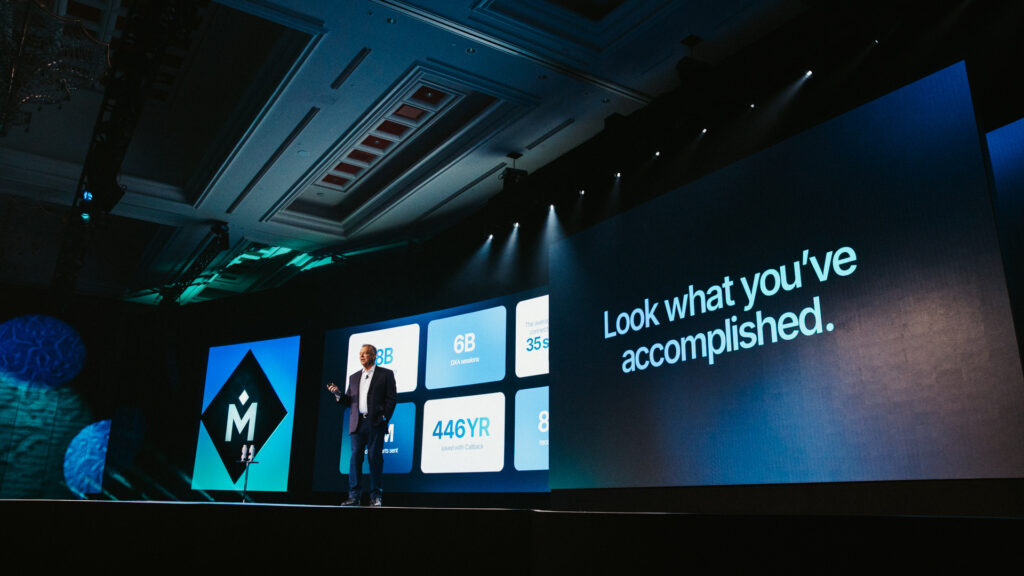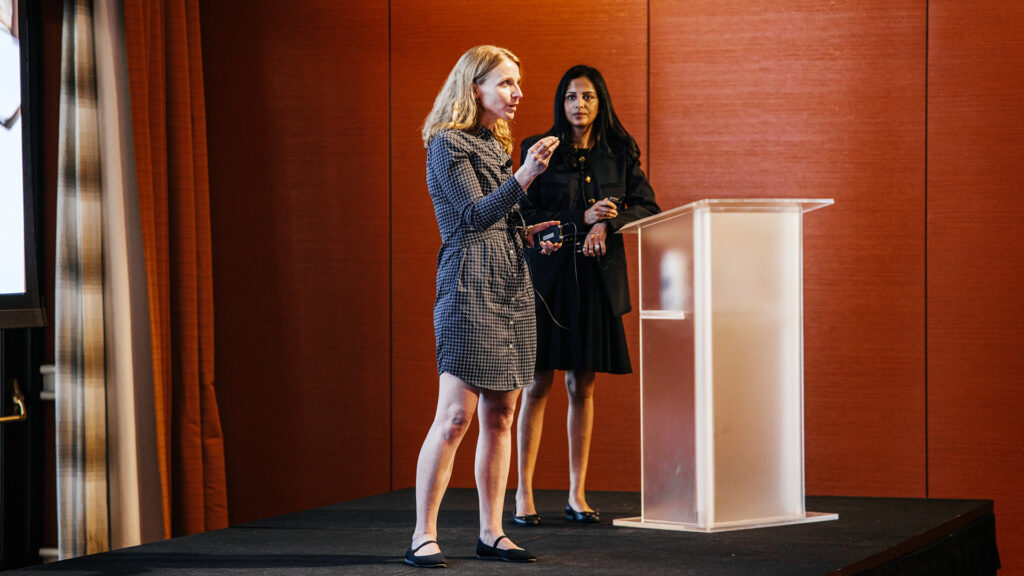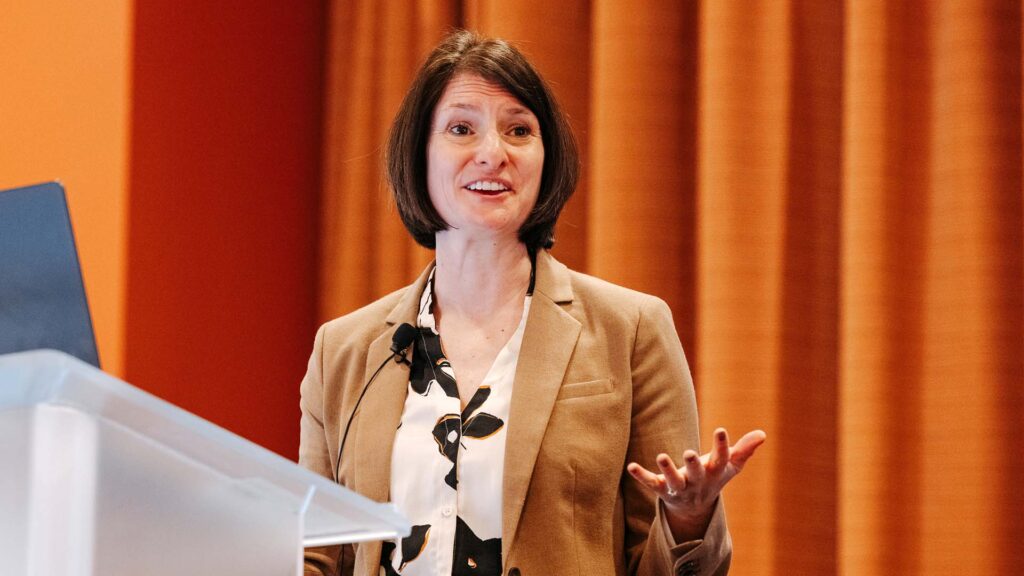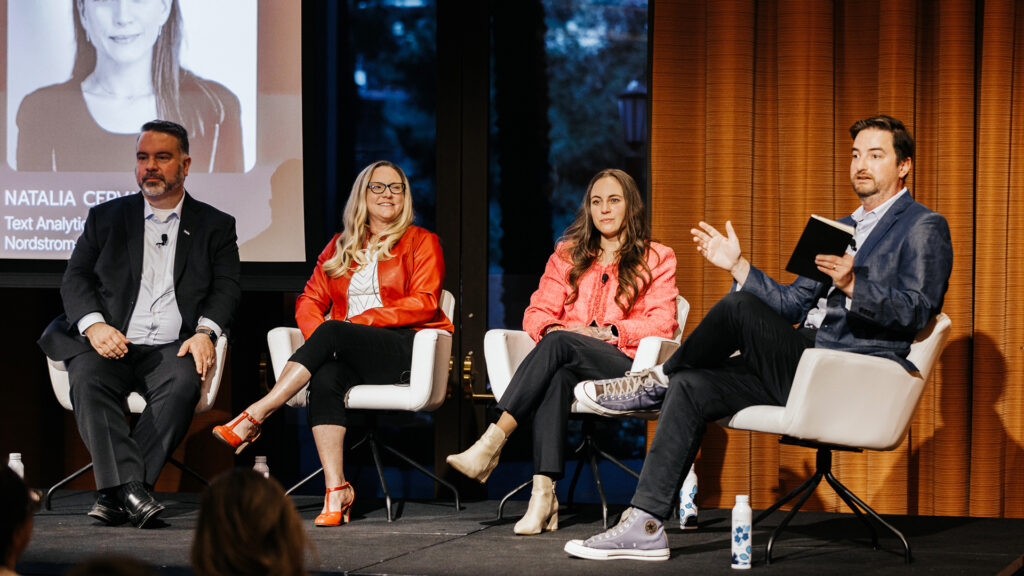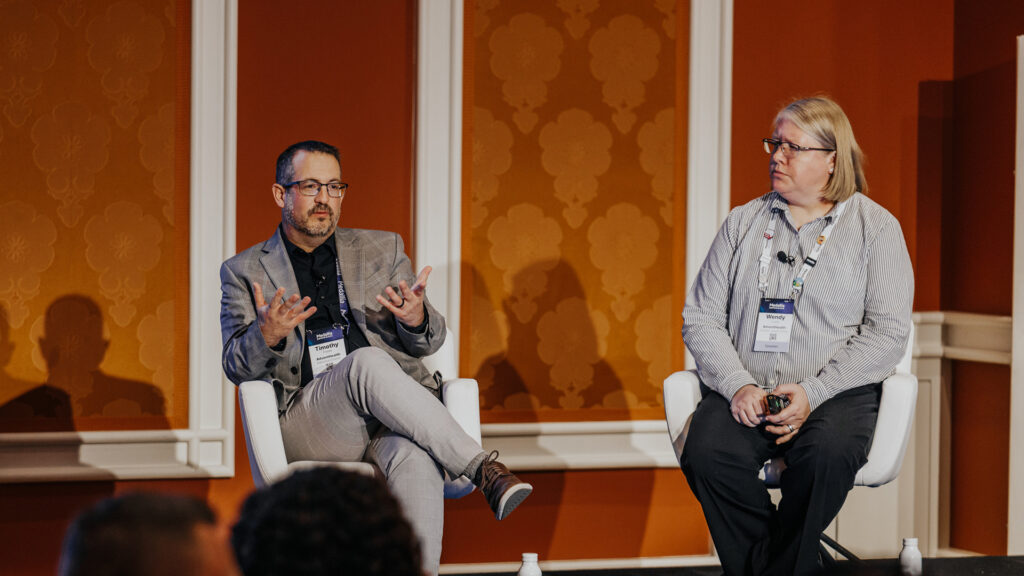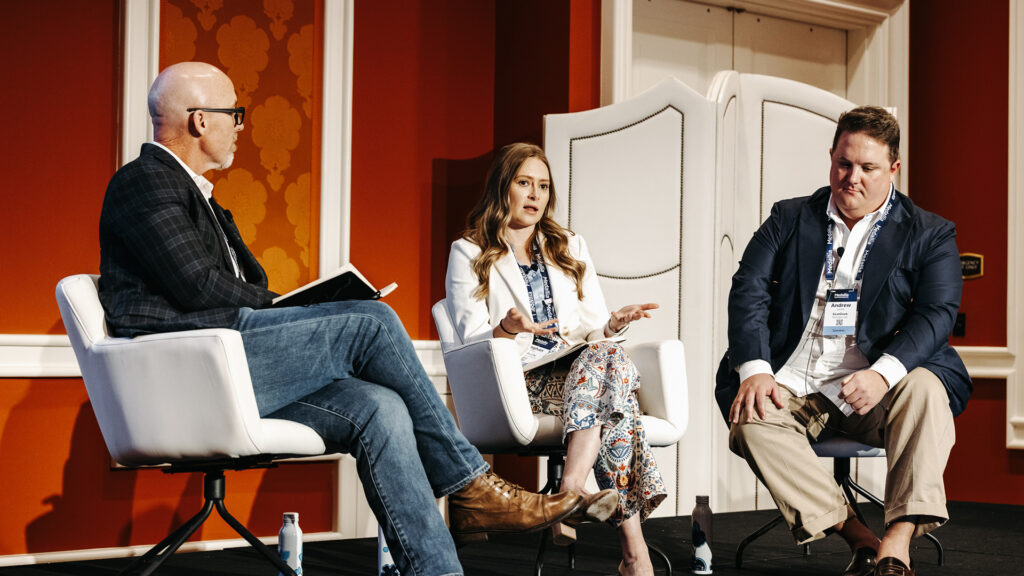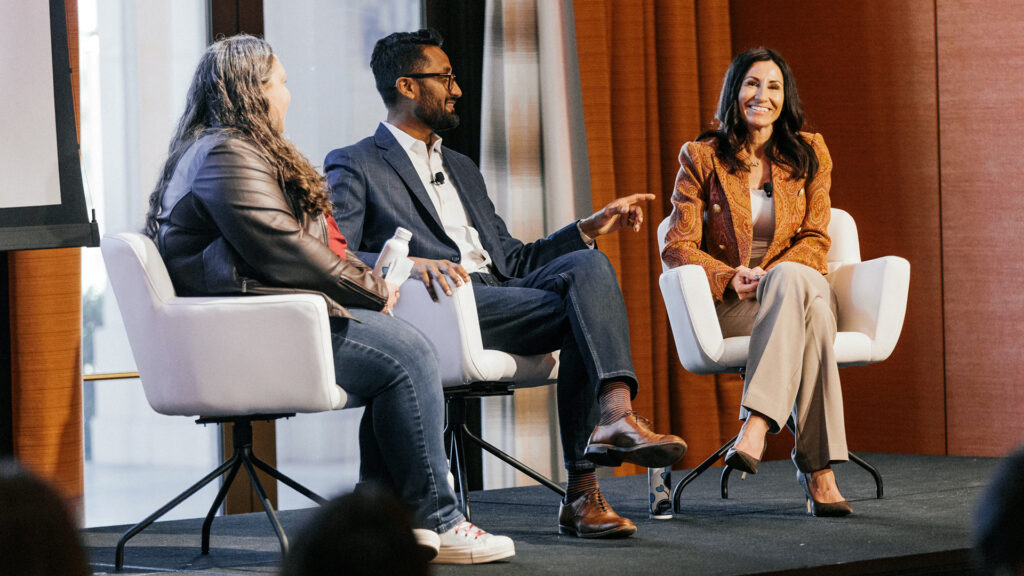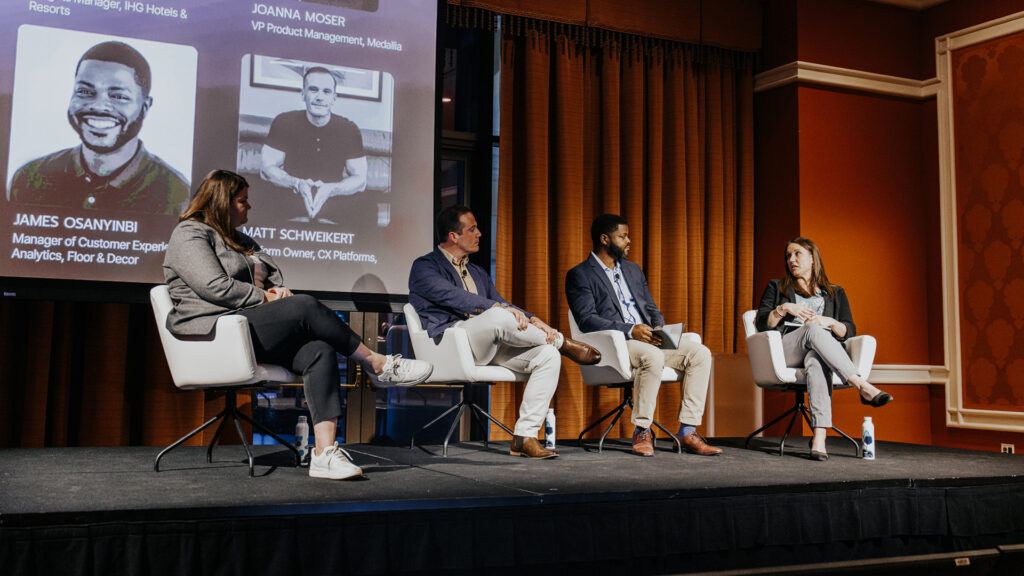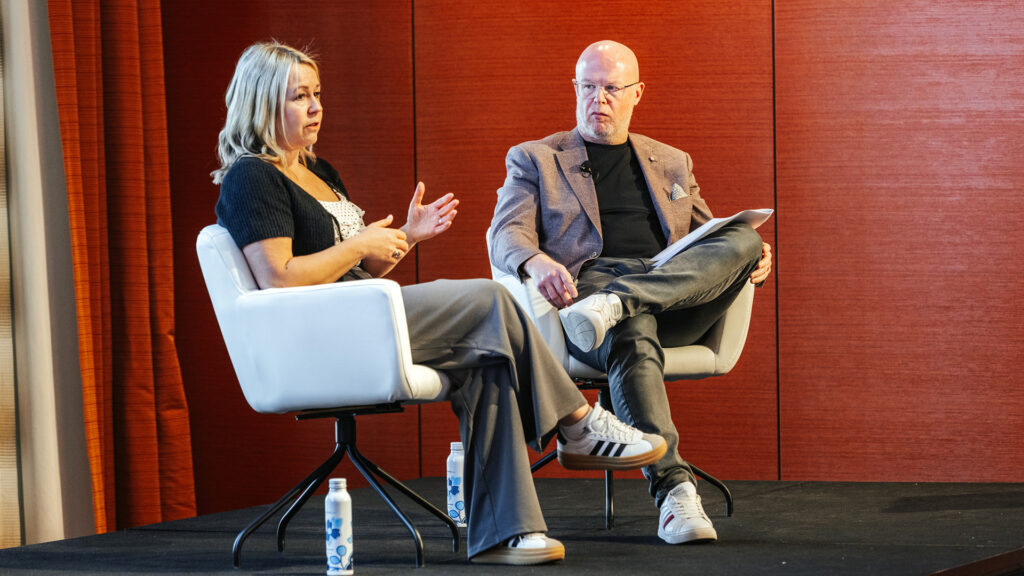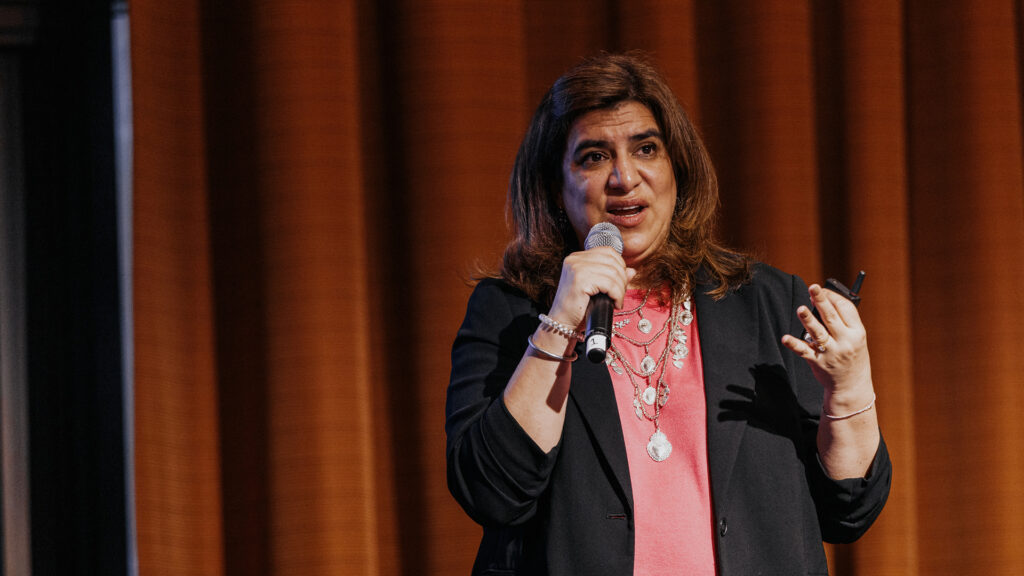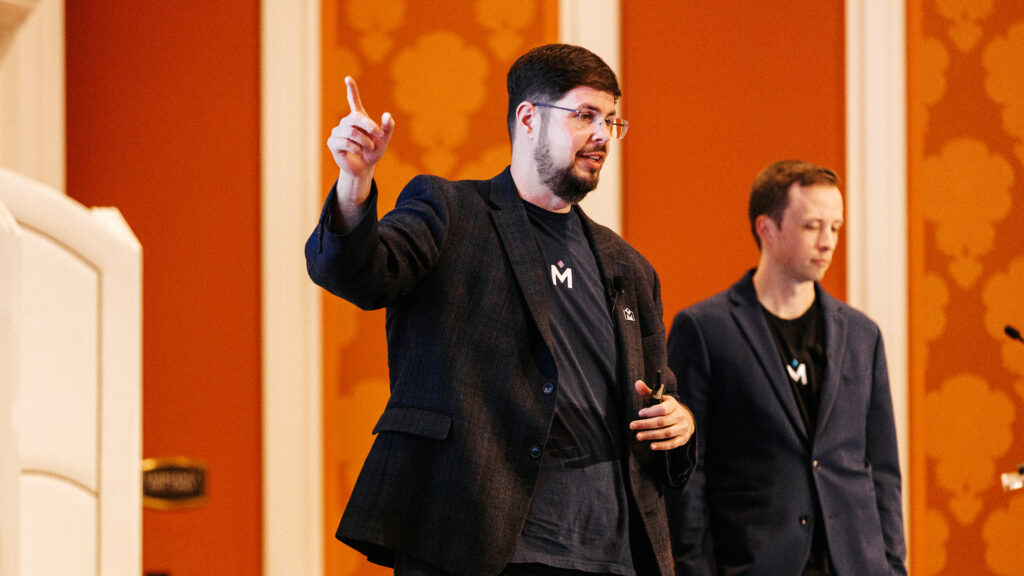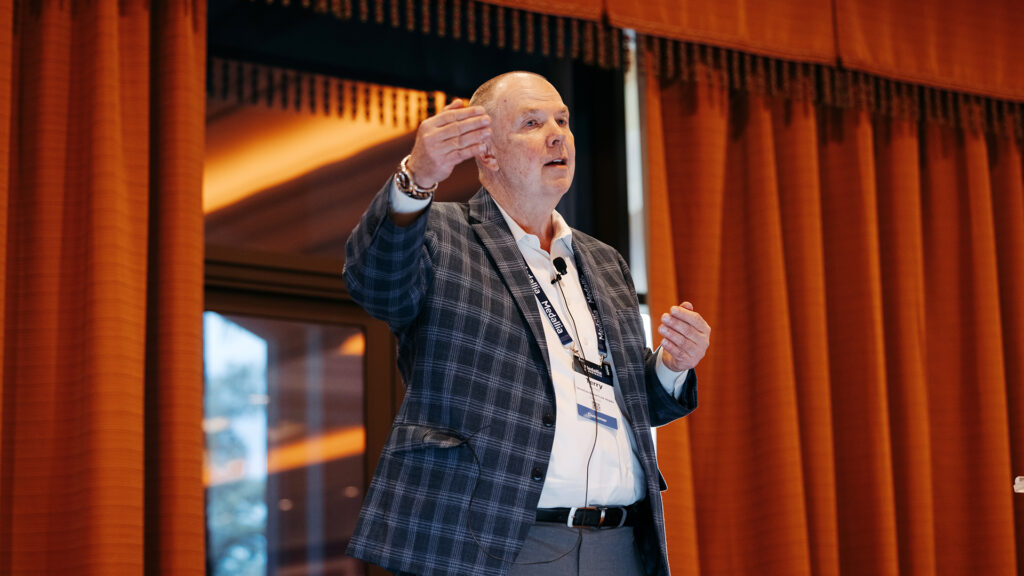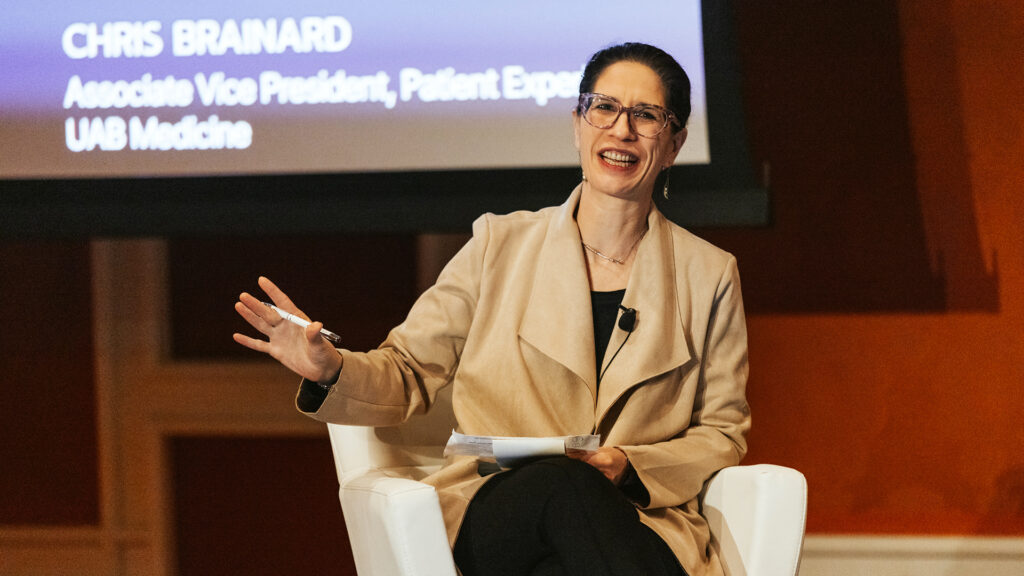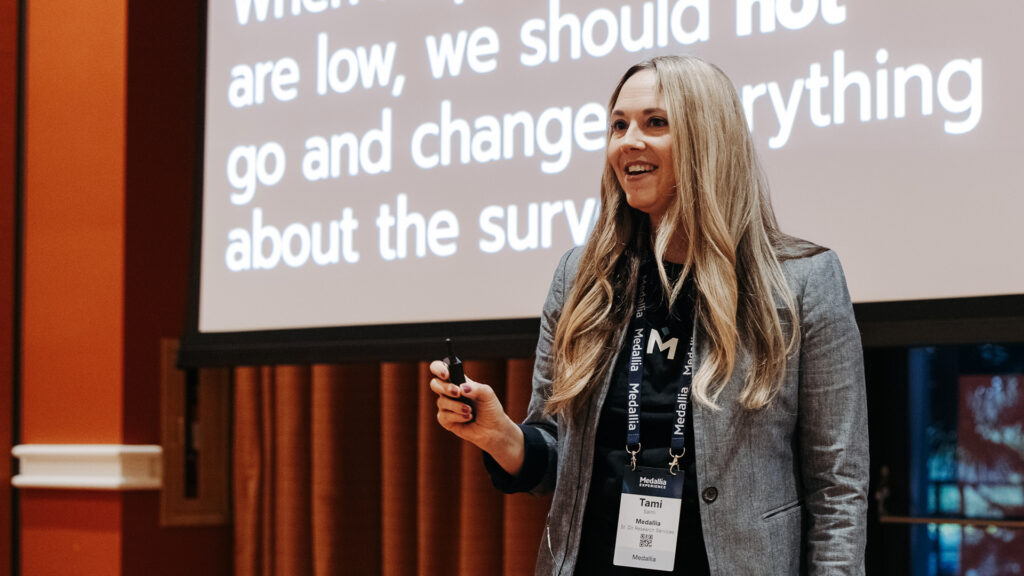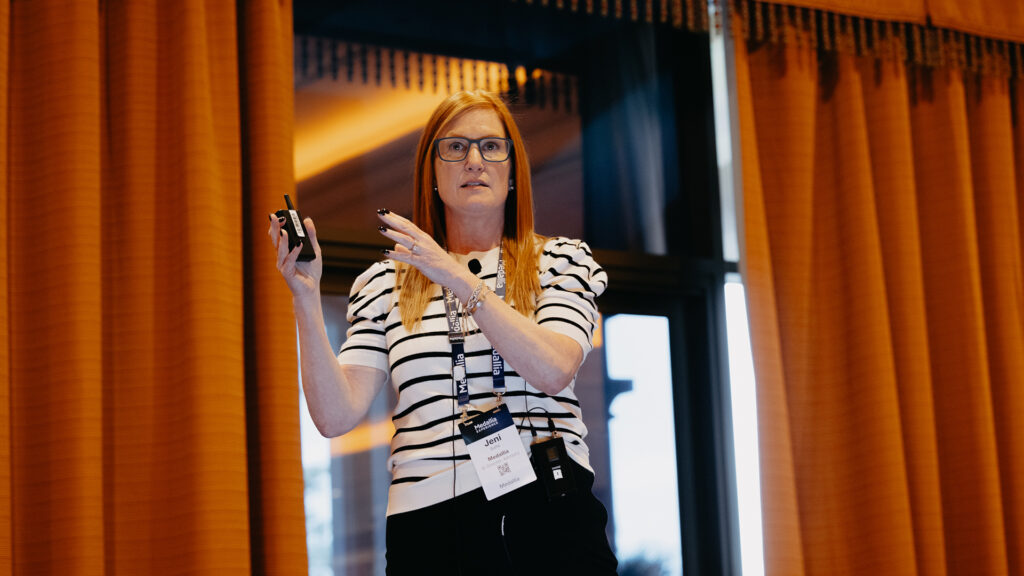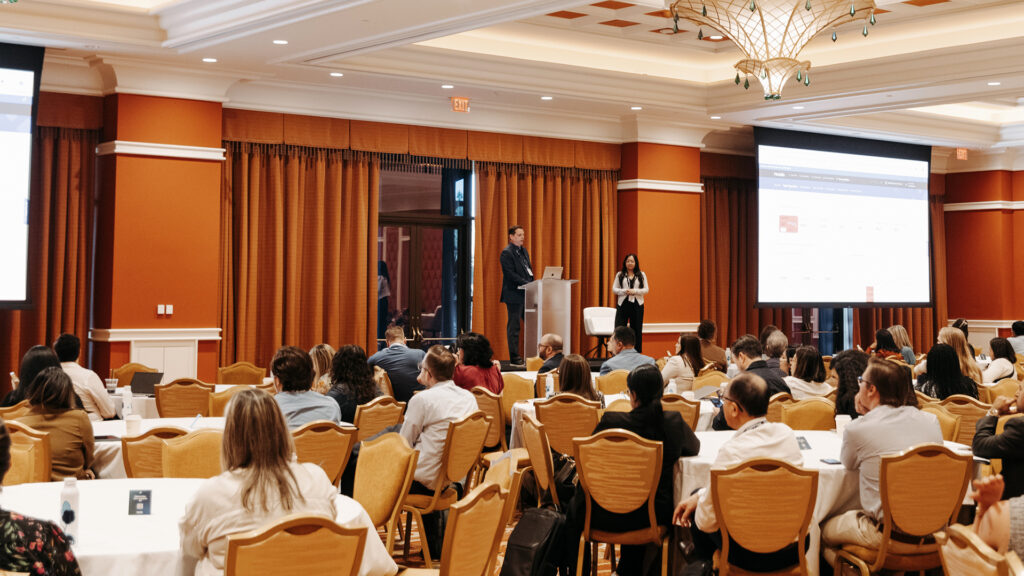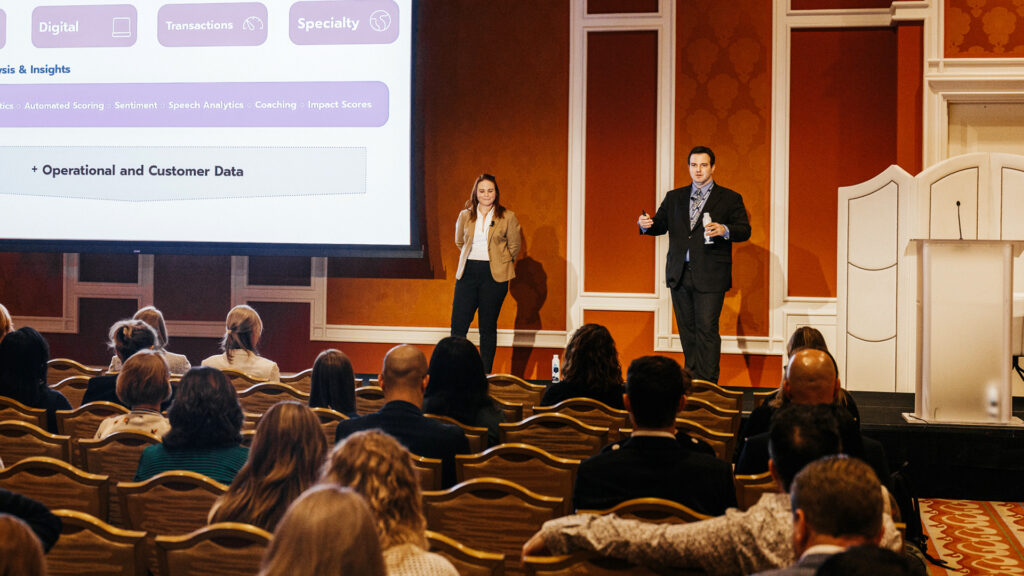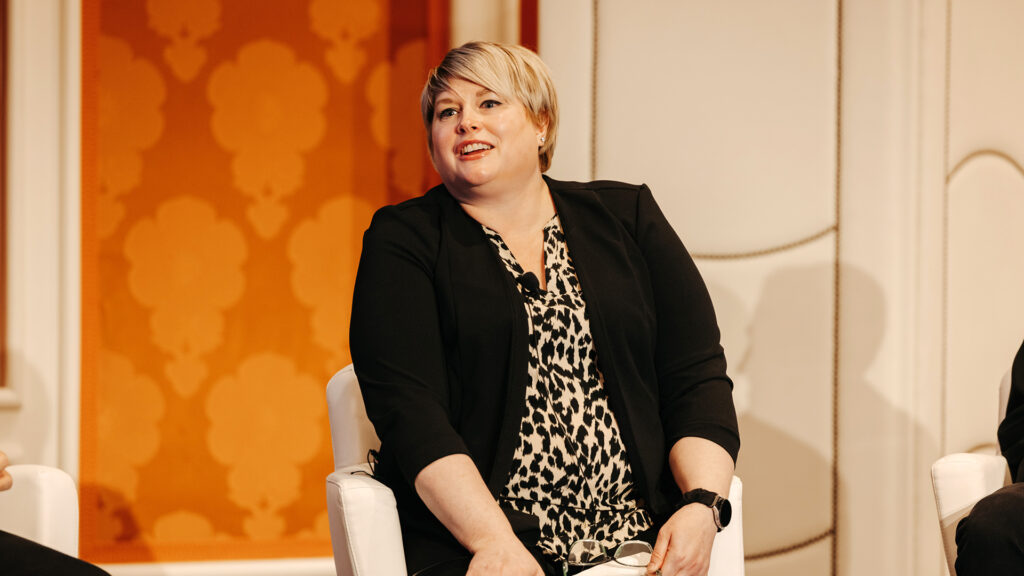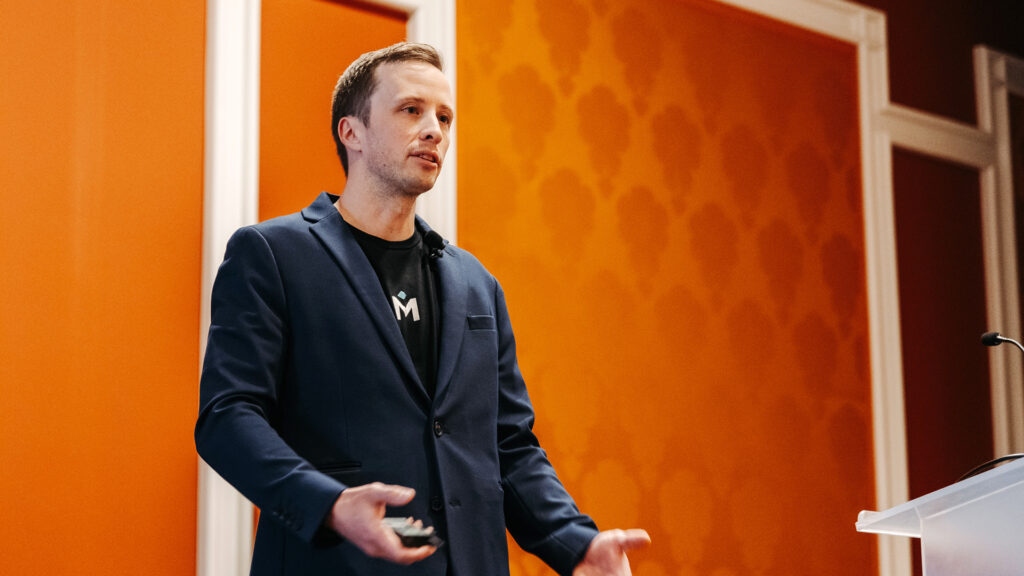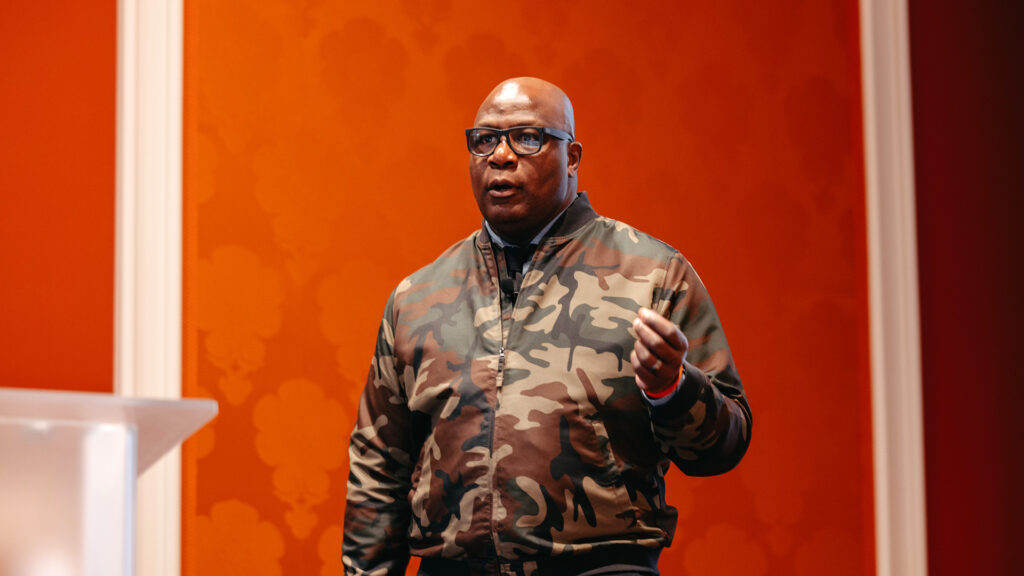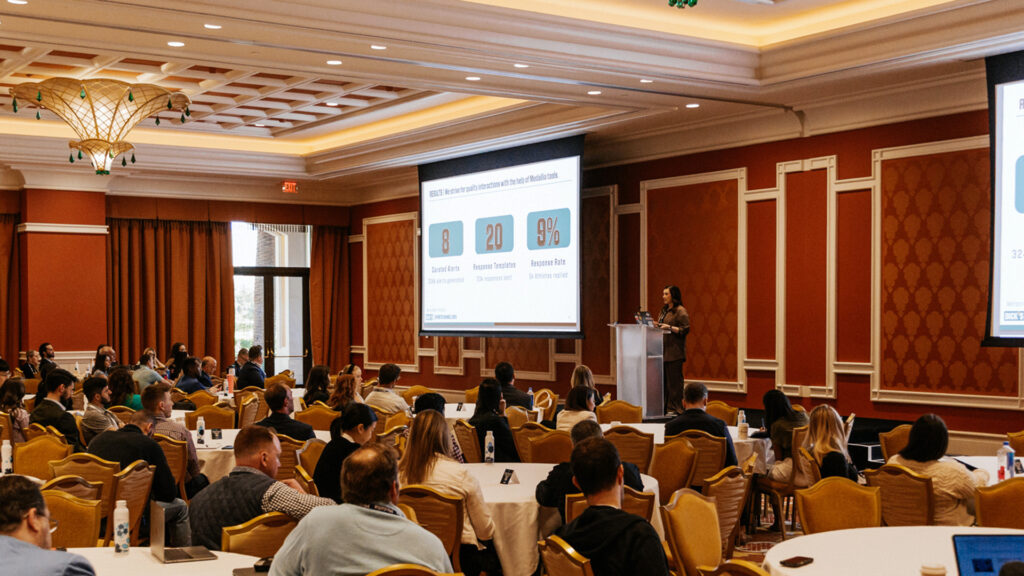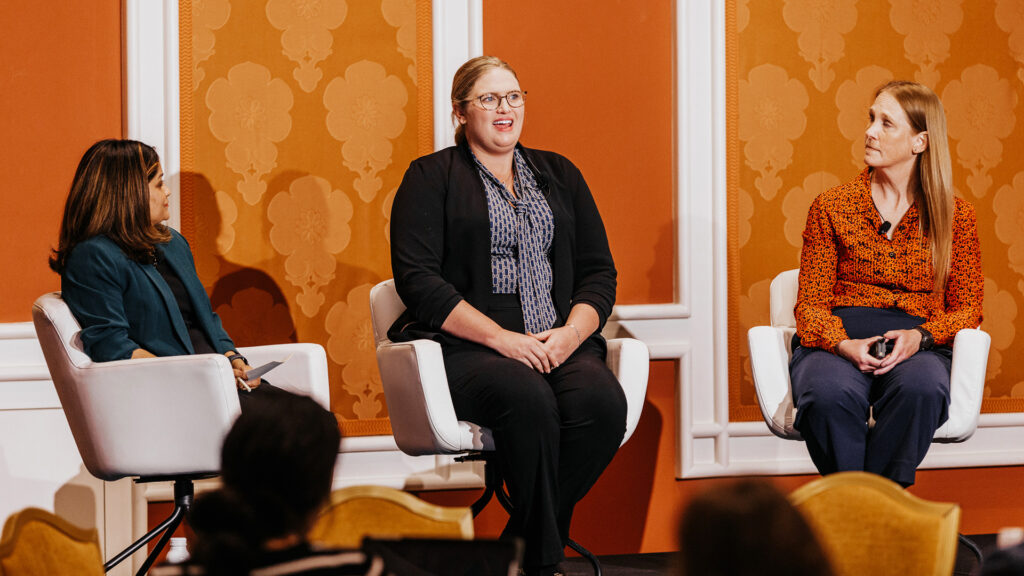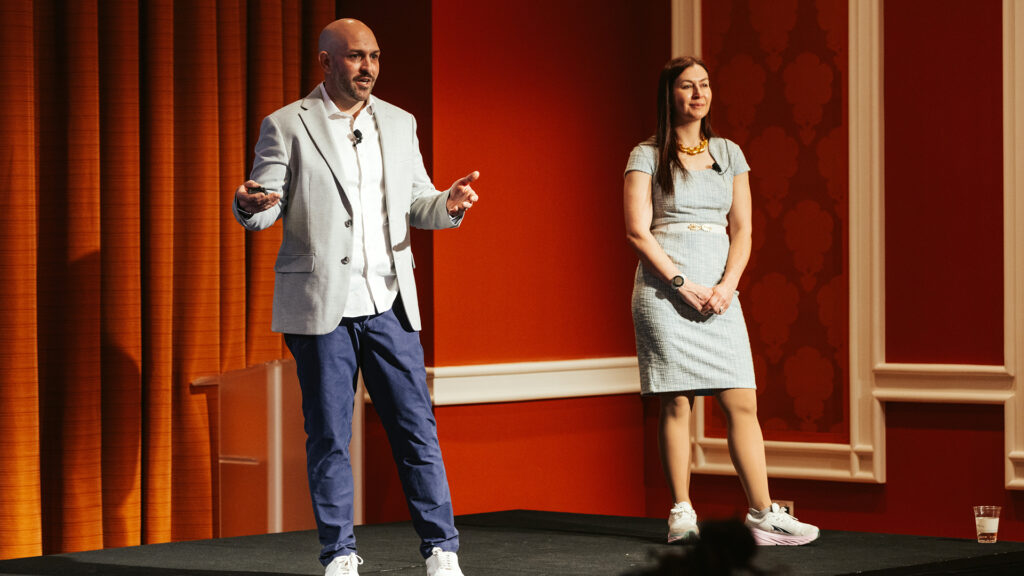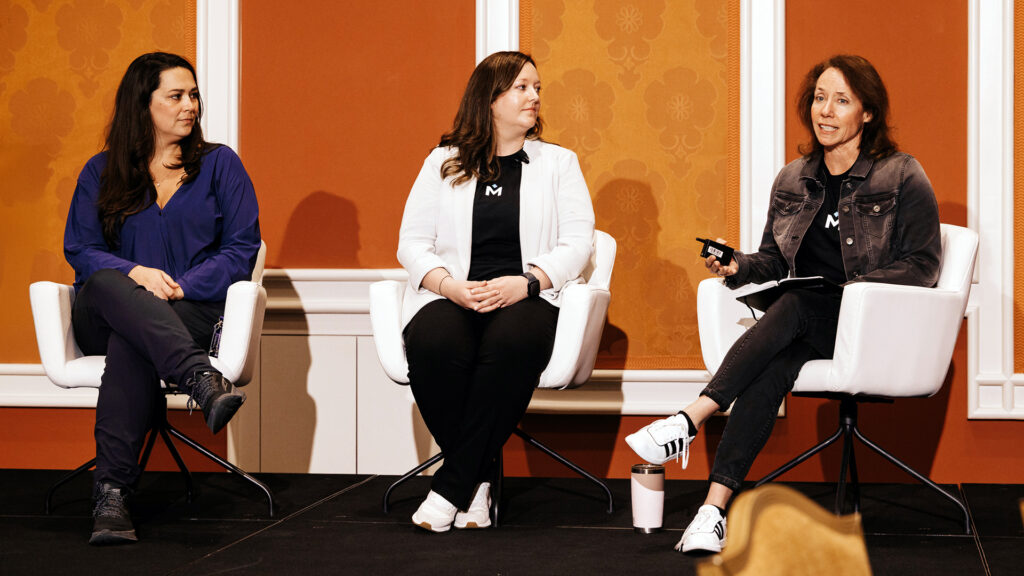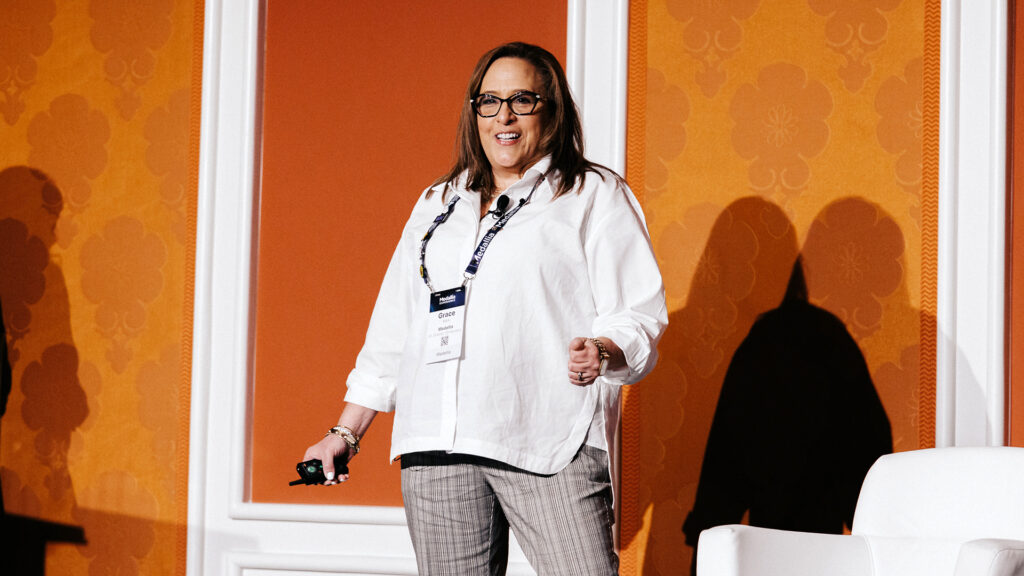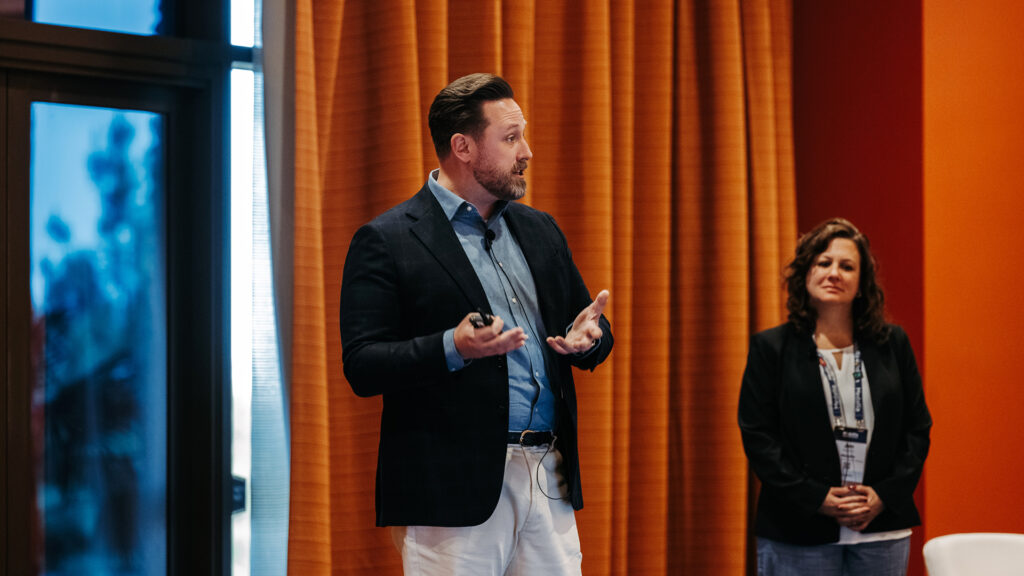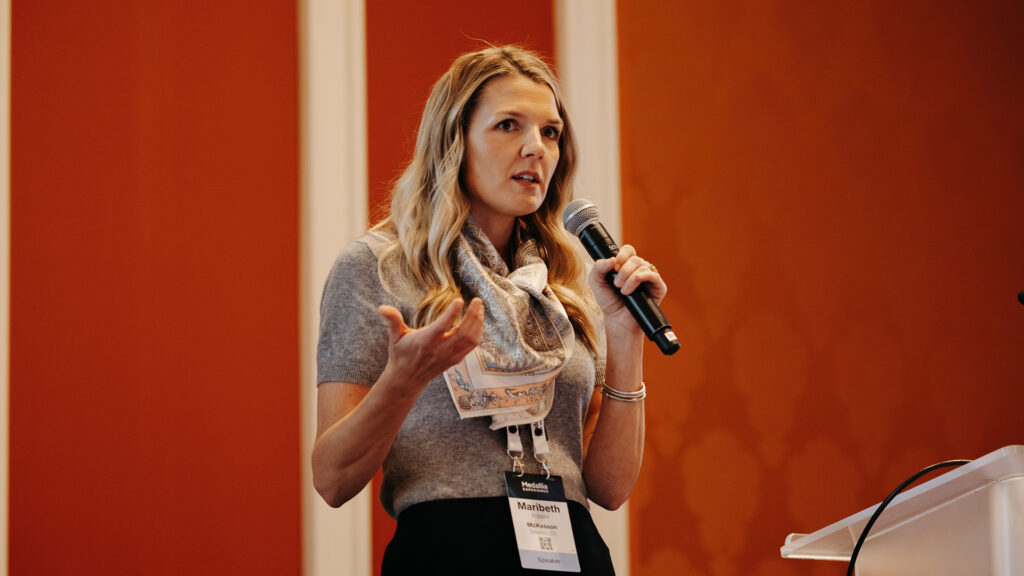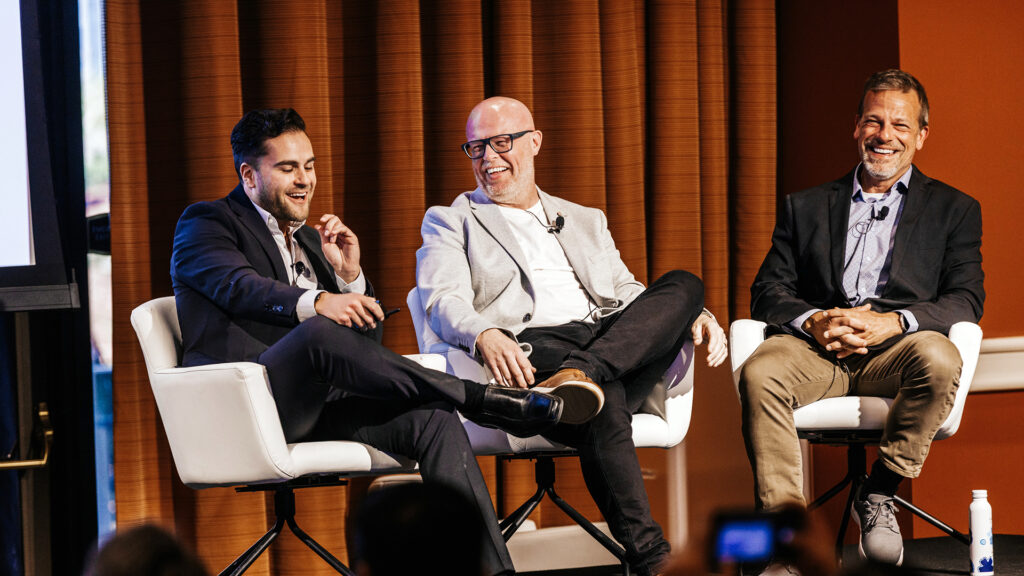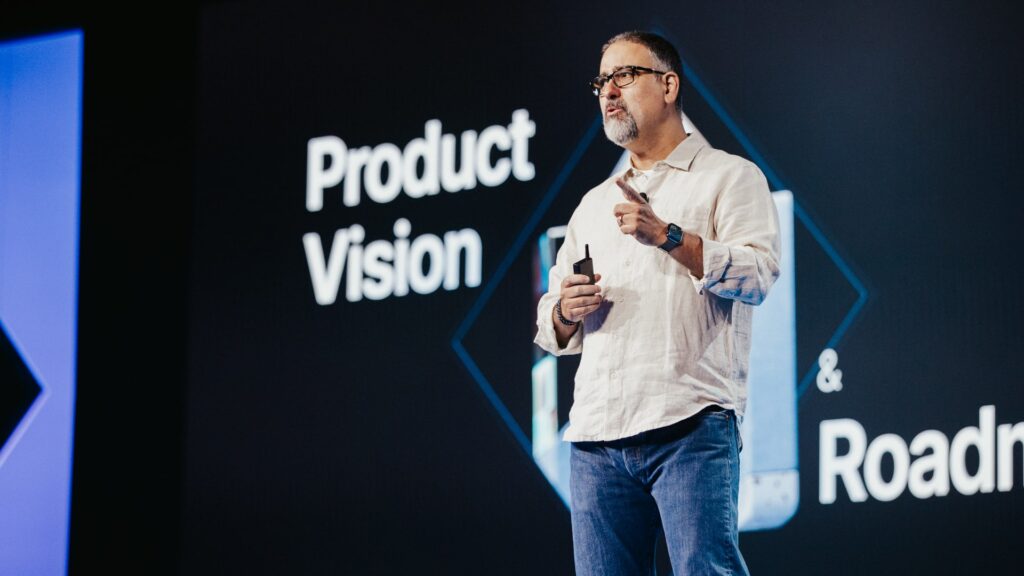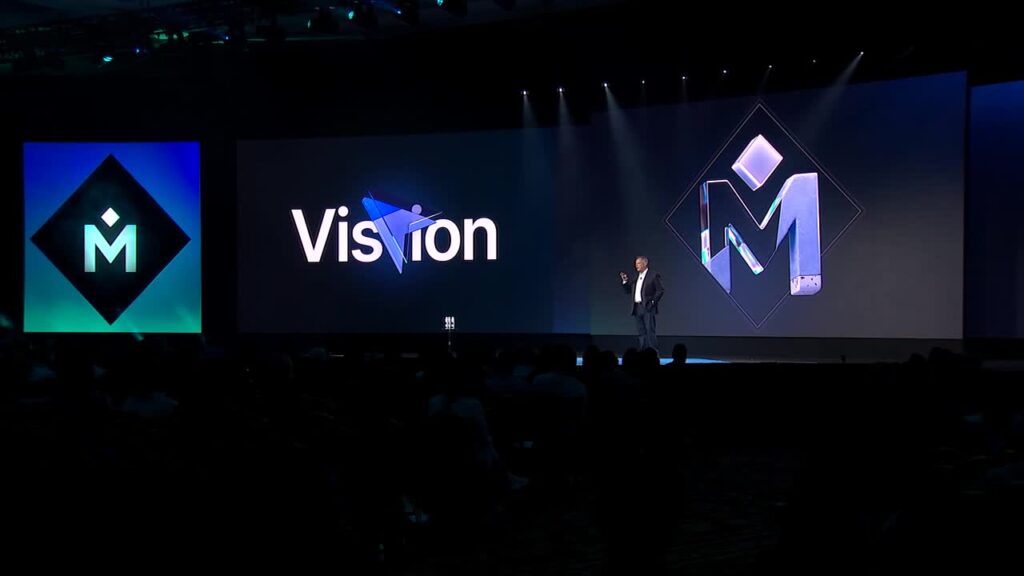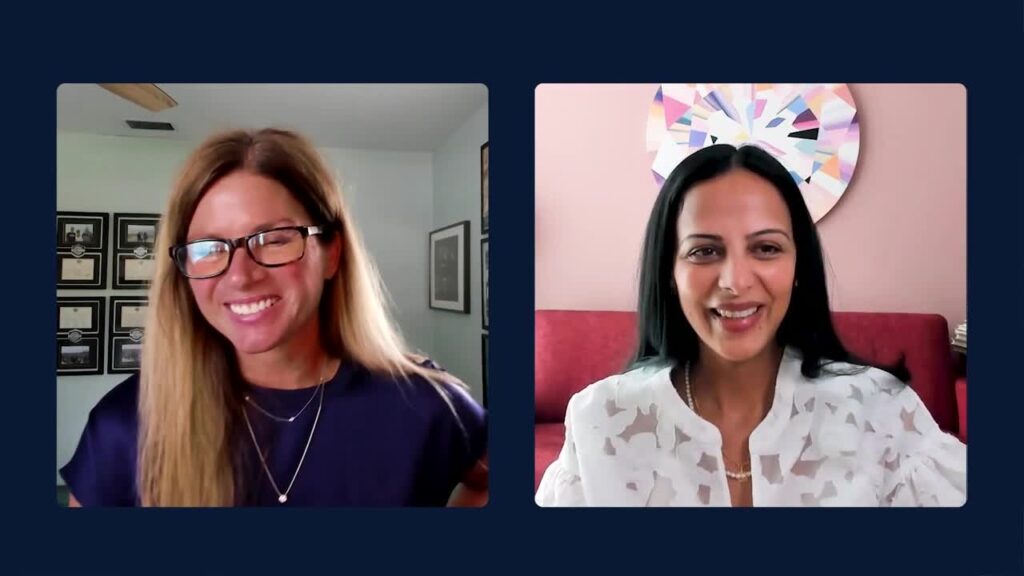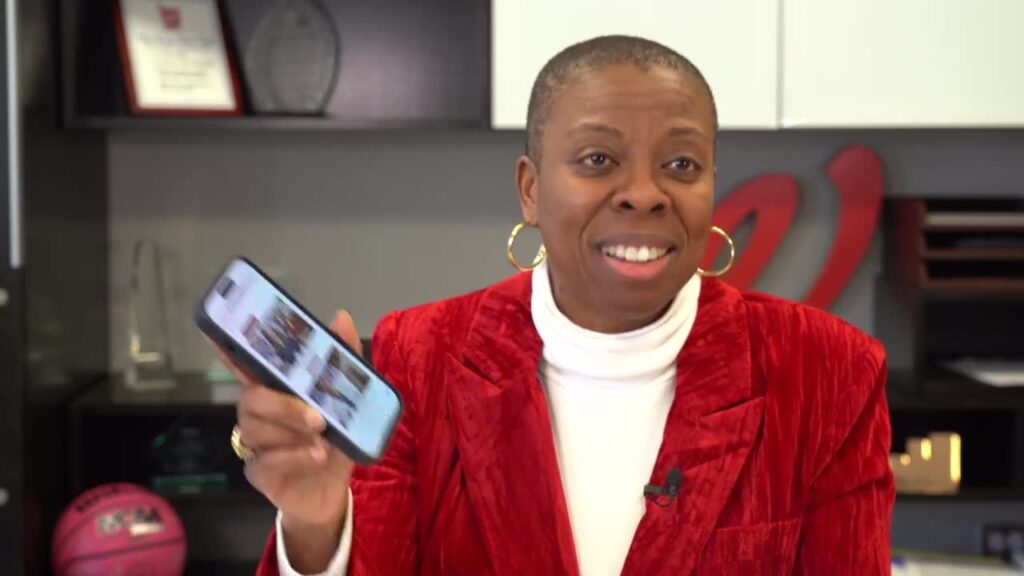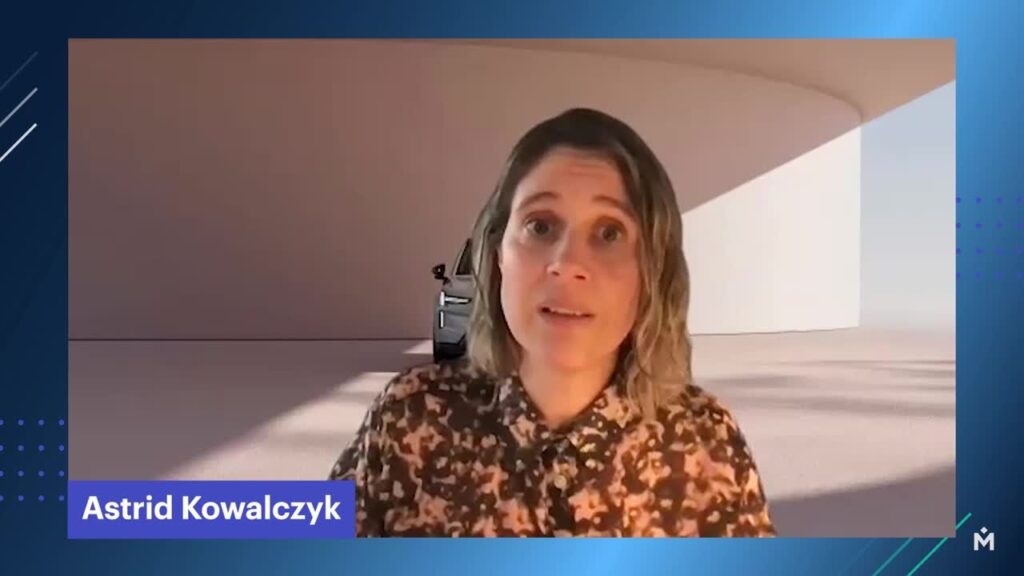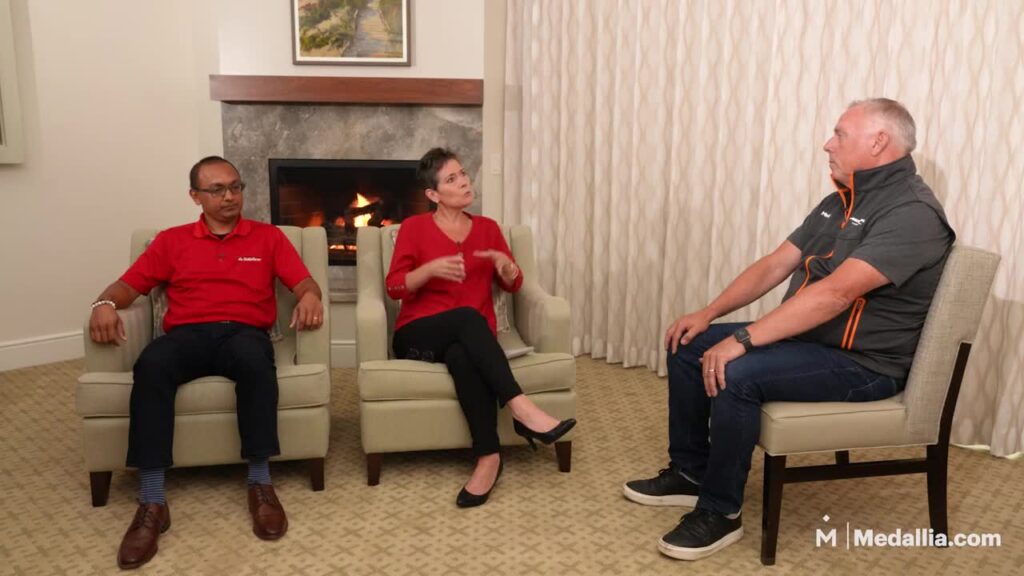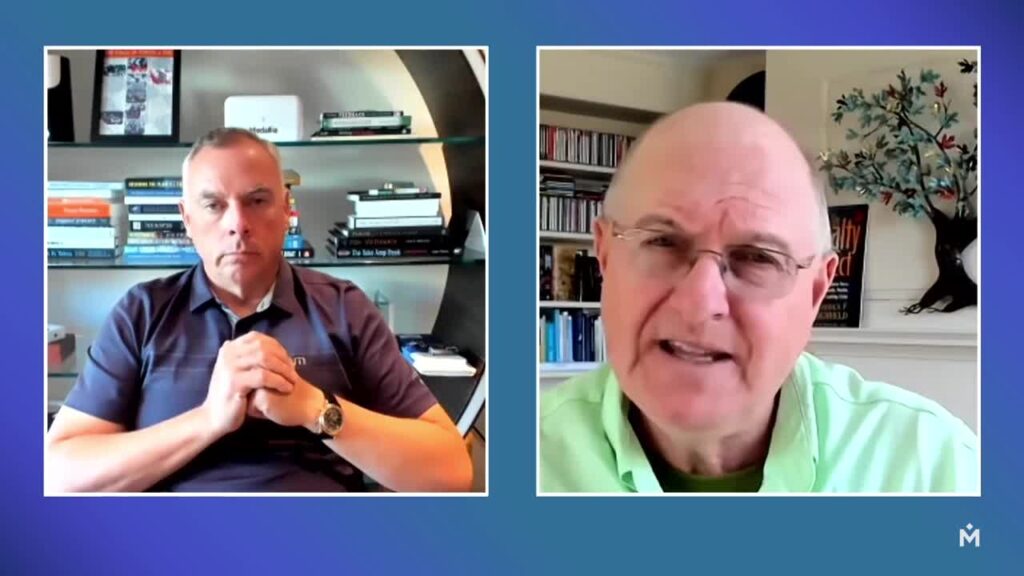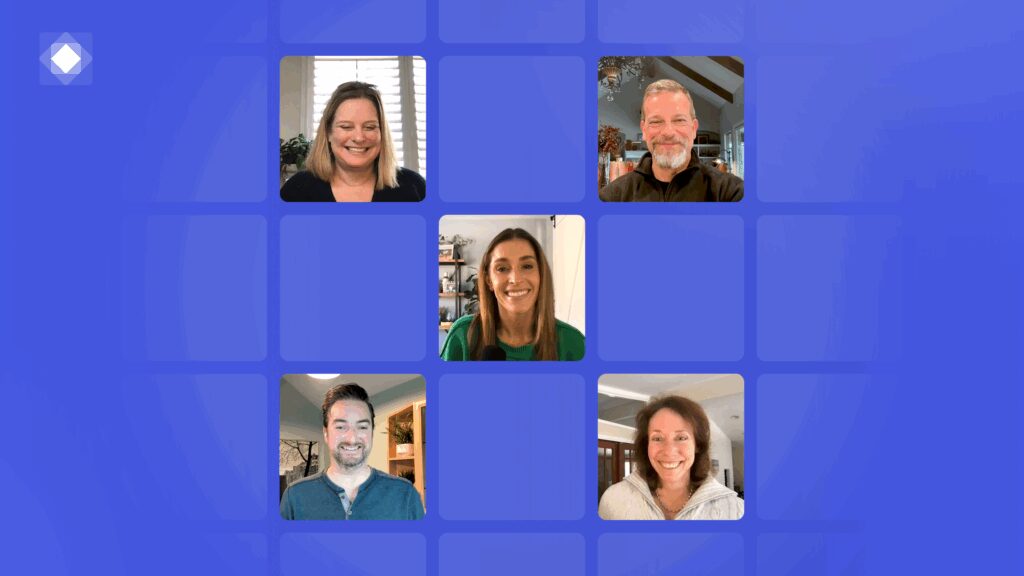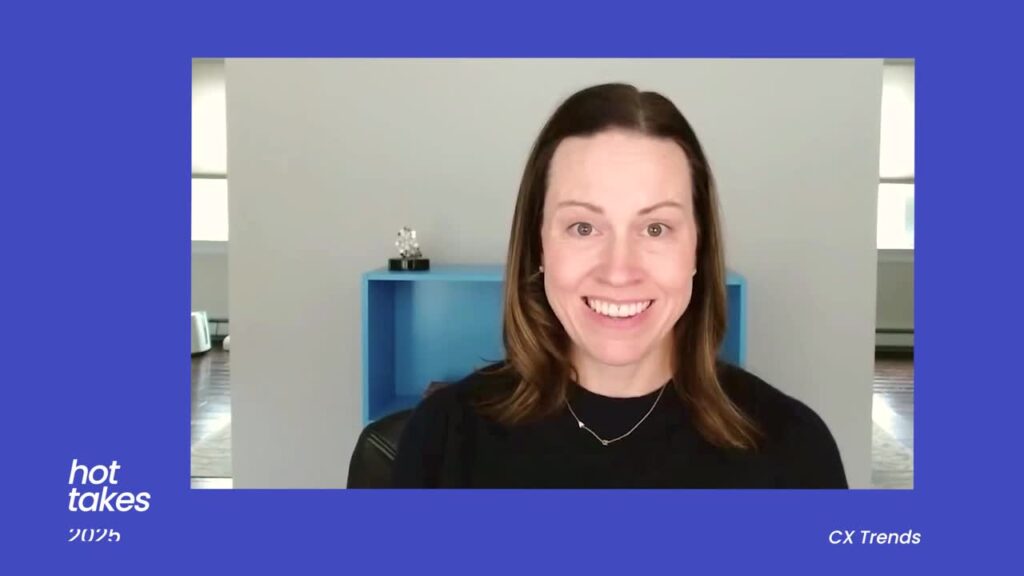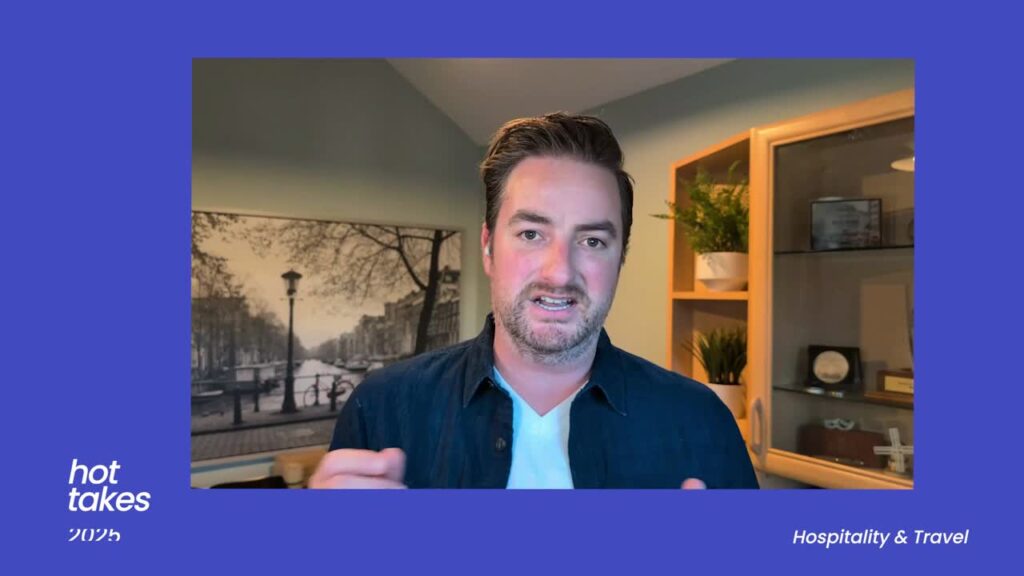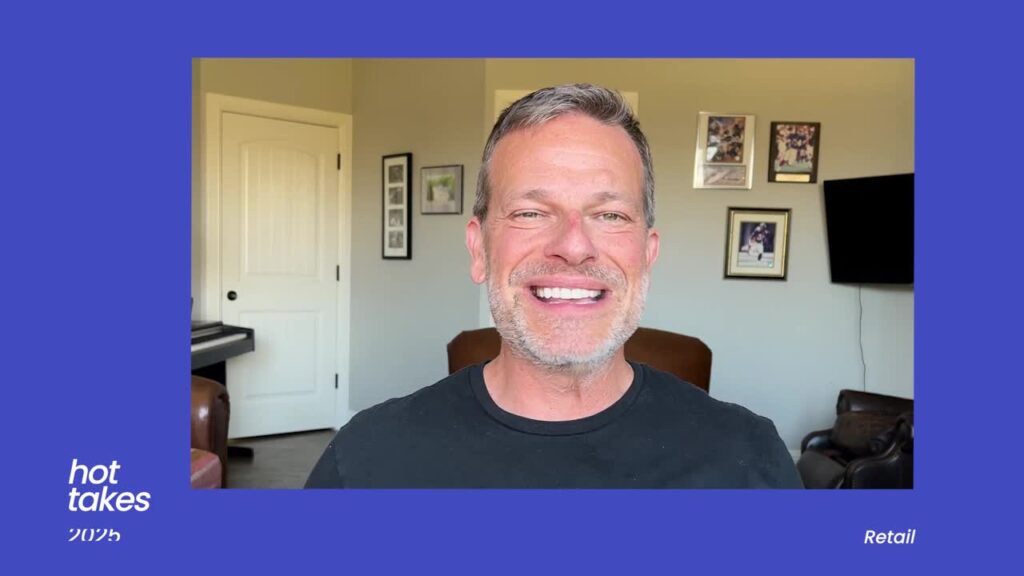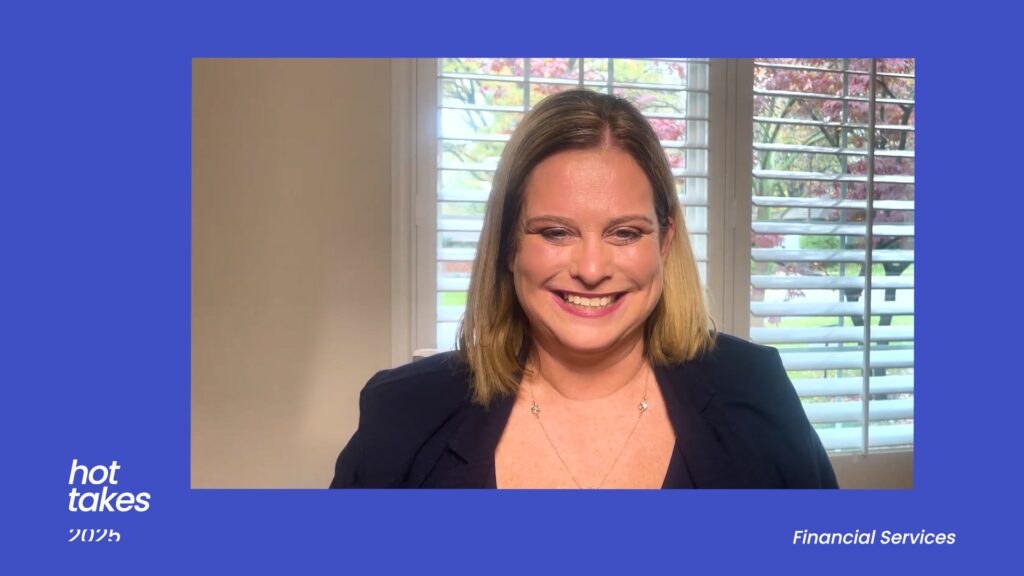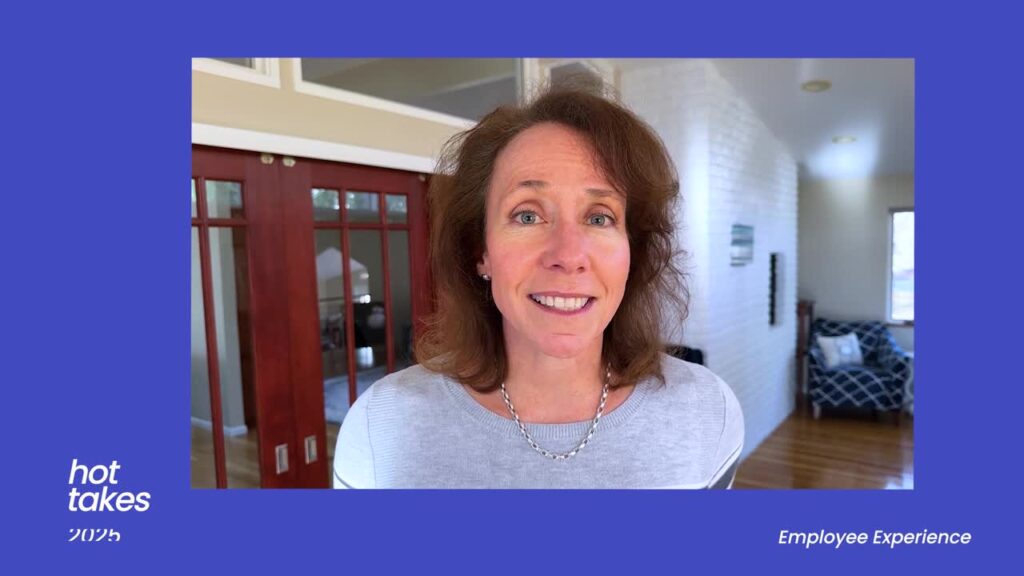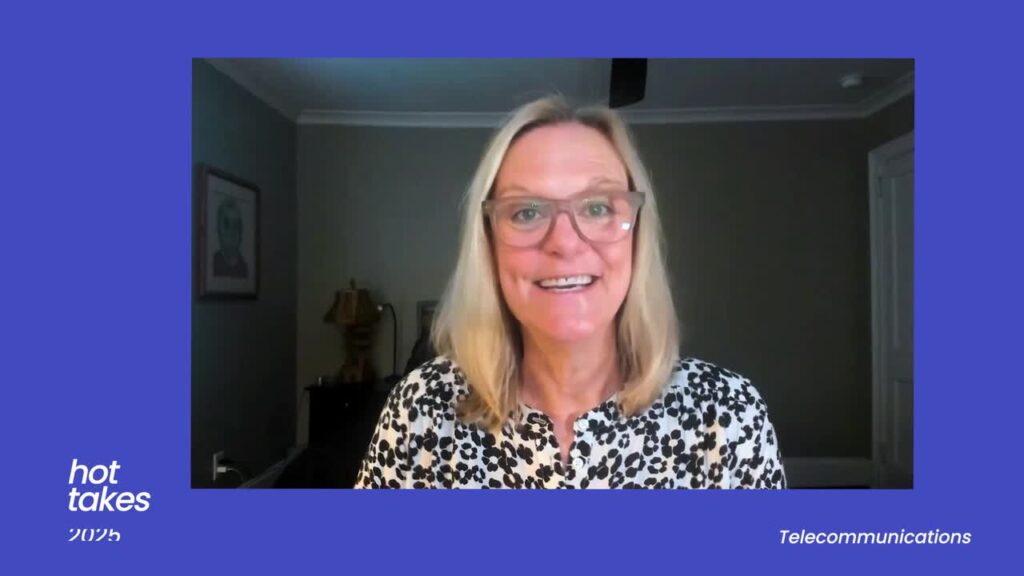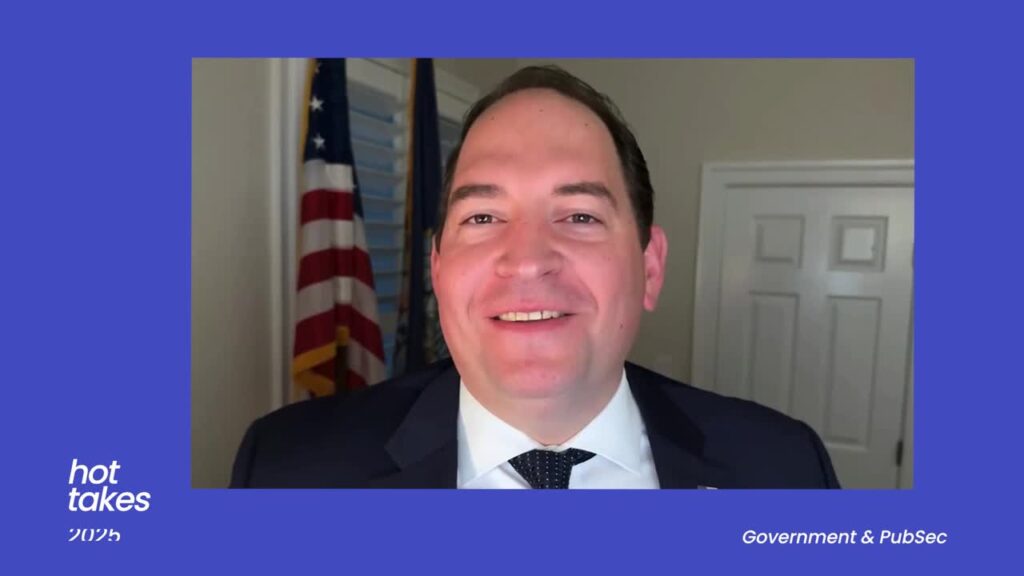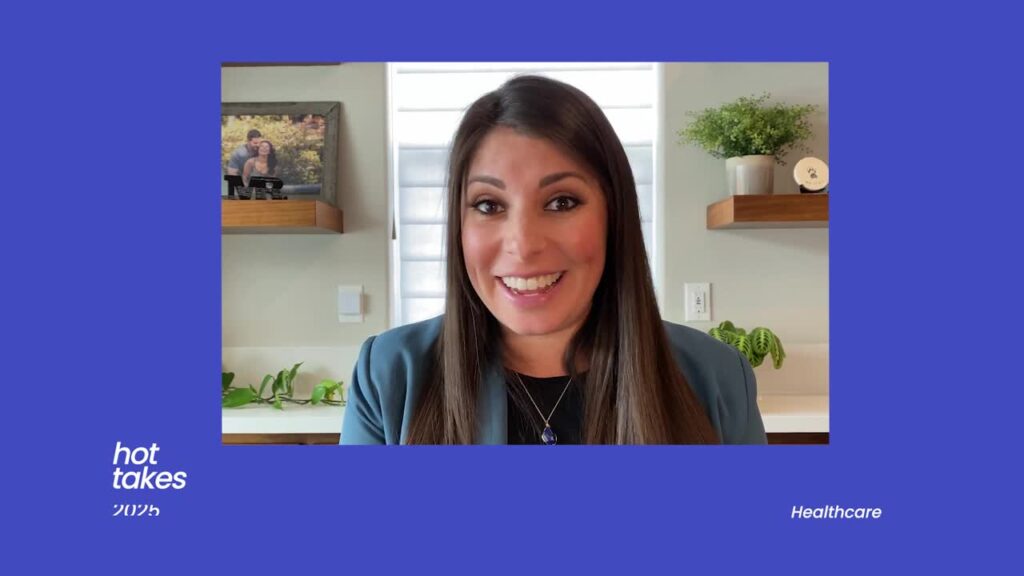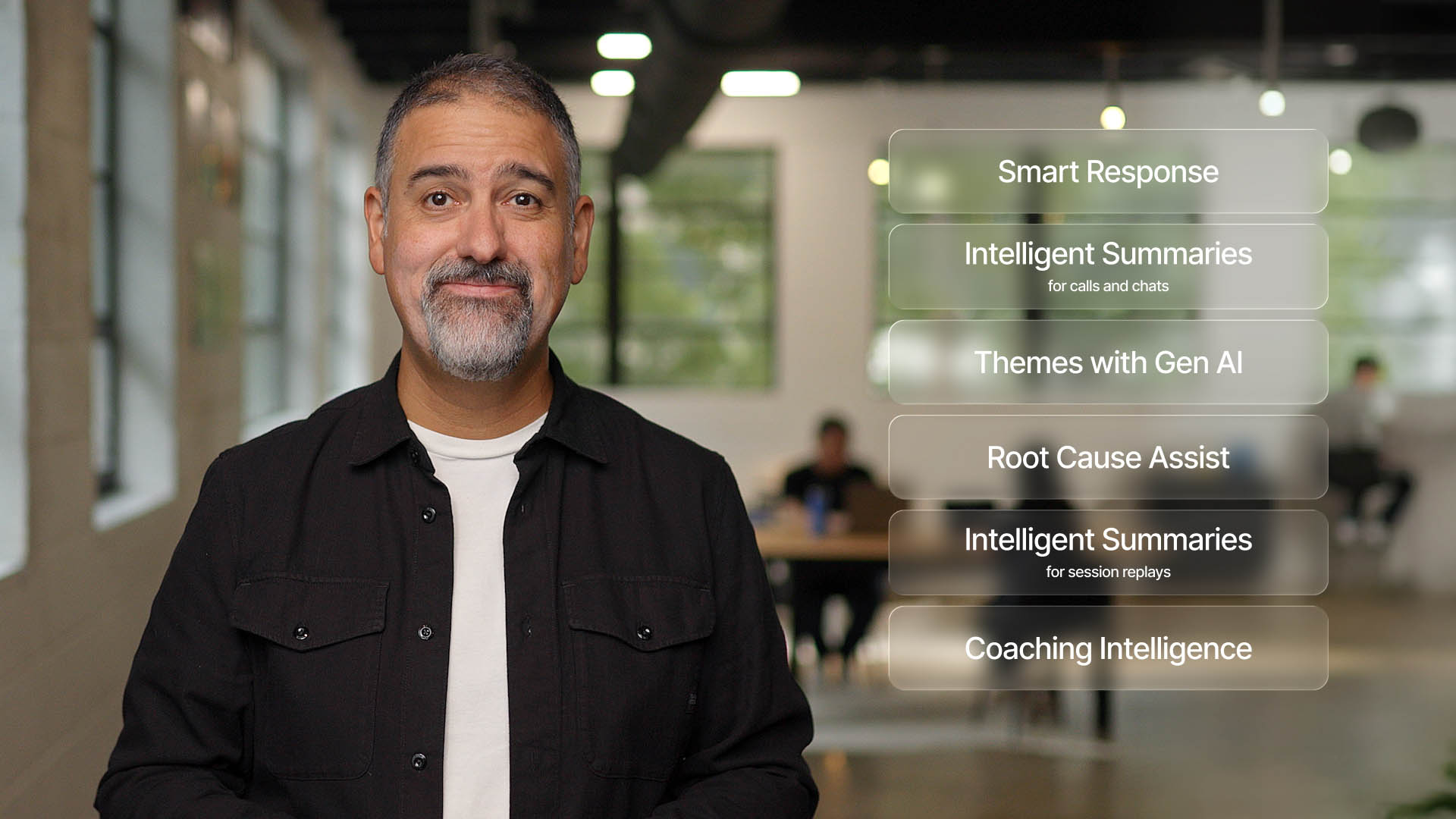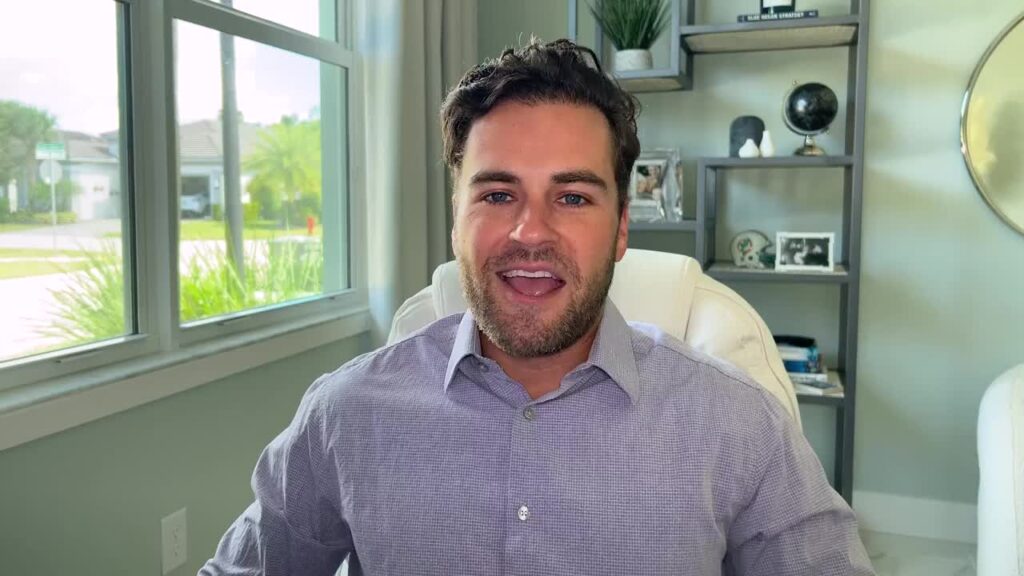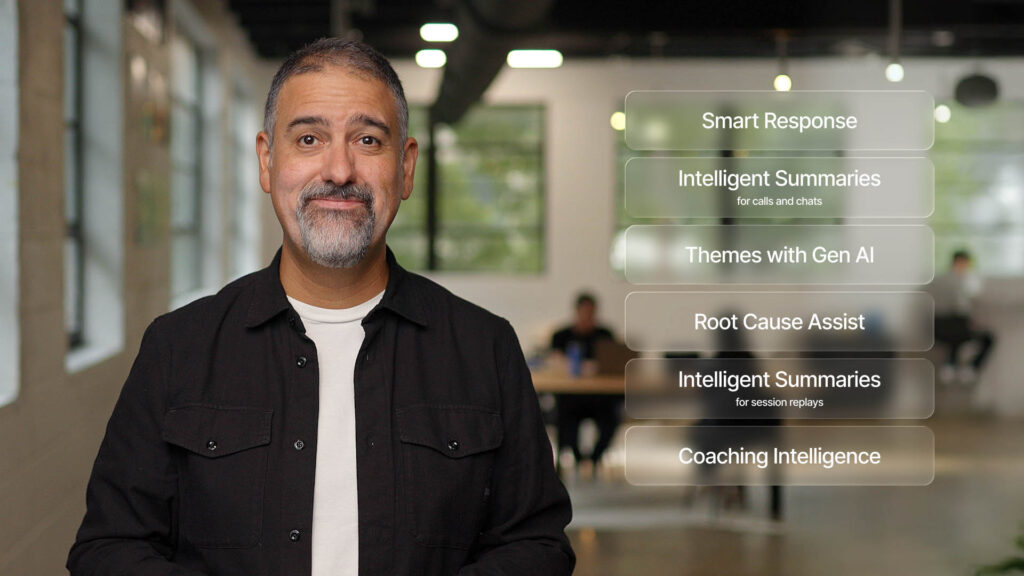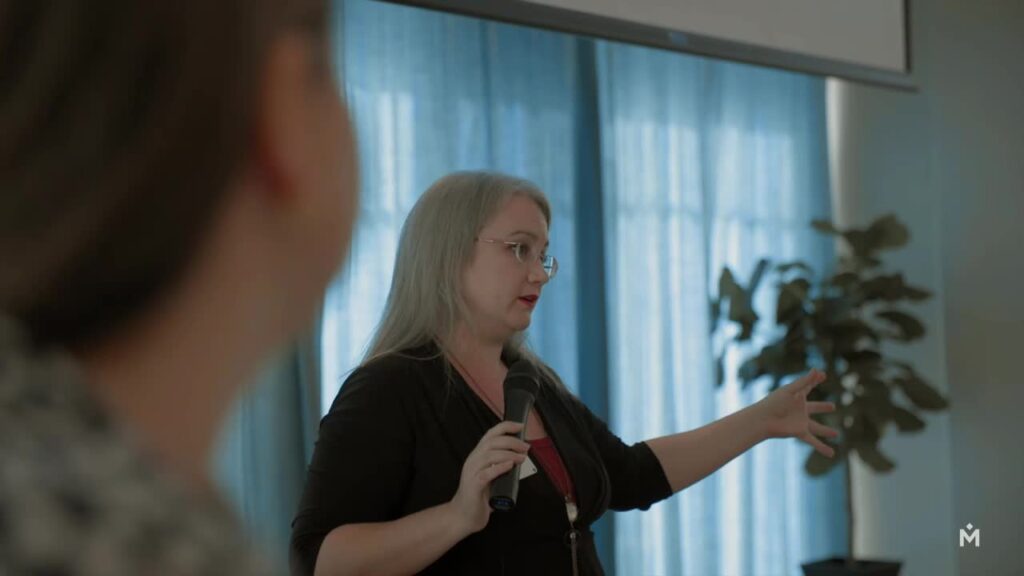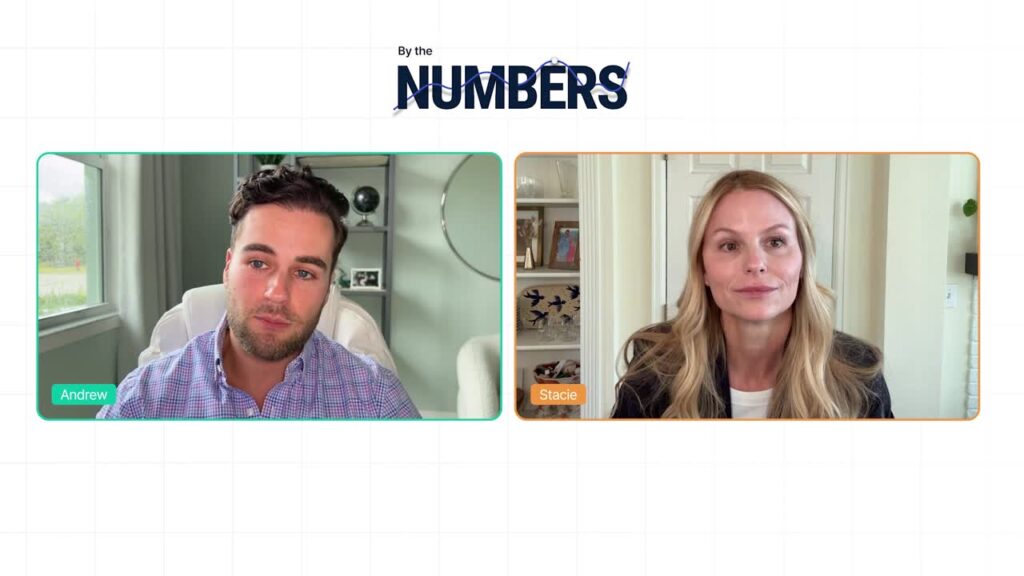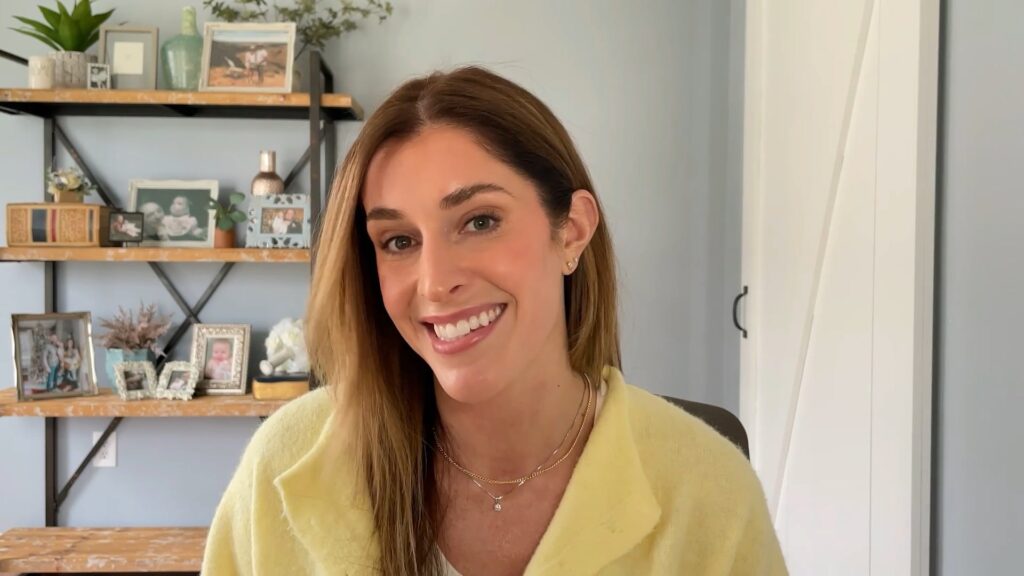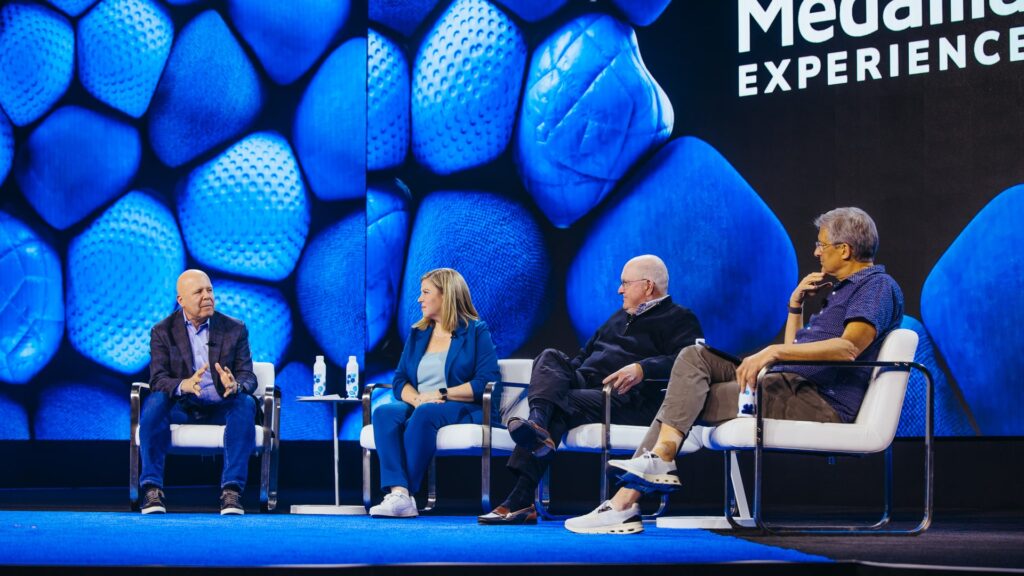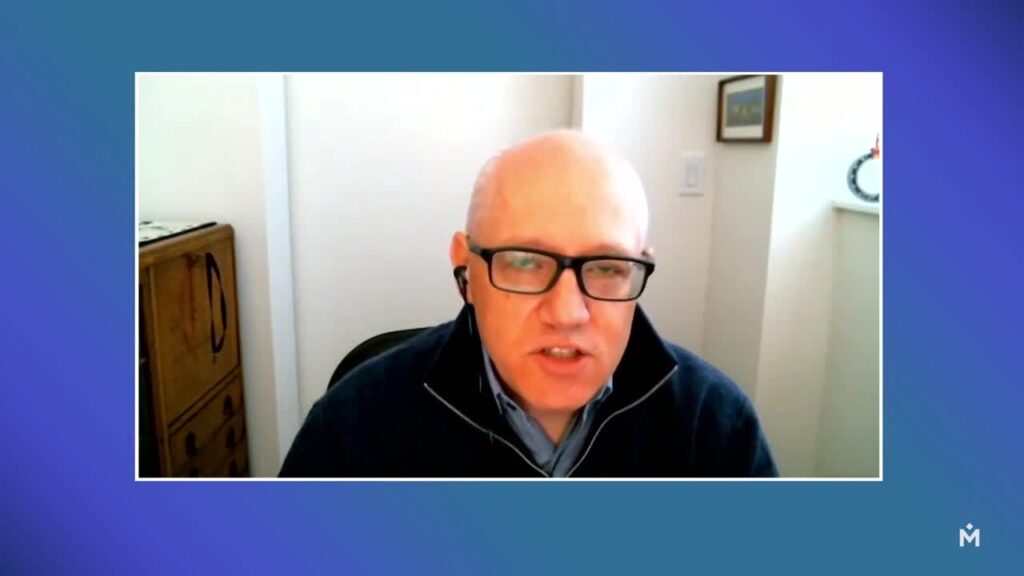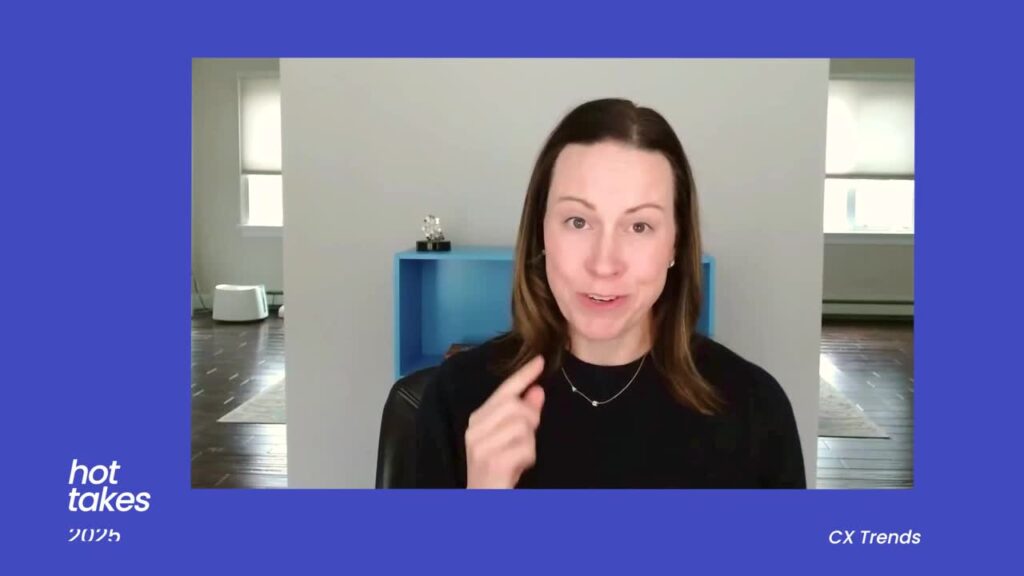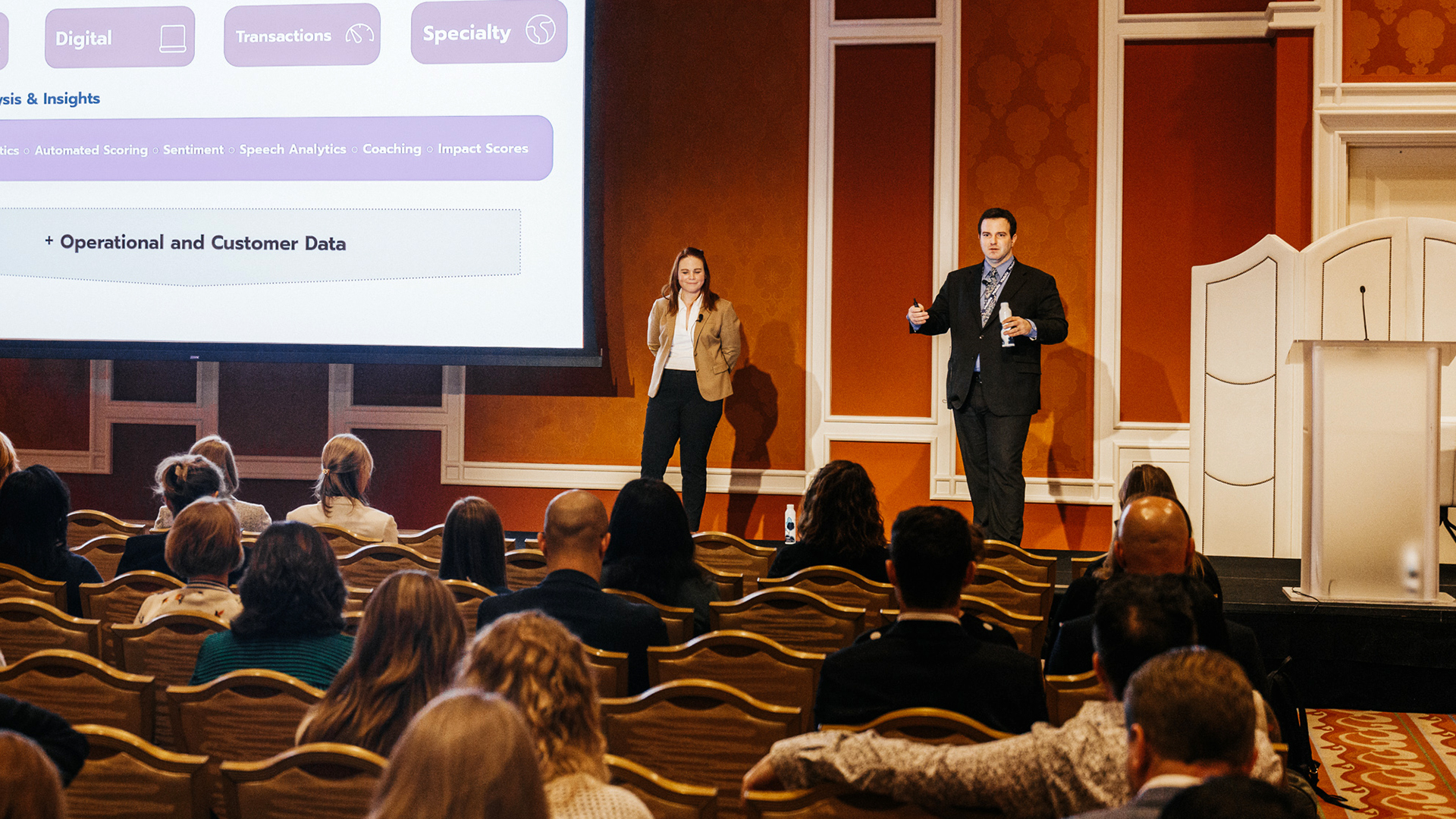Jen Dillon: [00:00:00] My name’s Jen Dillon. I’m a solutions advisor for all things omnichannel analytics, as well as contact center tech stack at Medallia, and I’m joined here with Daniel.
Daniel DeWyngaert: Good afternoon everyone. Daniel DeWyngaert. I am the Senior Manager of customer experience and Analytics at Exelon, coming with about a little over a decade of utility experience, specifically customer service, customer care and analytics.
I’m really excited to be here with y’all.
Jen Dillon: And so what we’re gonna be talking about today is we’re gonna be talking about data. We’re gonna talk about multiple different touch points across those different types of data points. We’re gonna be talking about how we can bring clarity to the chaos that is data, talking about, the CX maturity curve when it comes to omnichannel, and we’re gonna talk about defining excellence. We’re gonna hear from Daniel in terms of his experience journey with CX and omnichannel, and connecting the dots across those different types of touch points. At the end, we’re gonna have a q and a where you can ask.
Me questions, but more importantly you can ask Daniel questions in terms of, the path that he’s forged with looking at connecting those different types of dots together. Focusing [00:01:00] in on the customer and how important that overall journey is from an endpoint perspective. This is a little chaotic.
That’s purposeful. How many of you guys understand where these different types of questions are coming from? It’s a variety of different, oh, yes. Hands raised. Wonderful. There are a lot of different questions, comments, complaints, requests in these different types of questions. And this is common, a lot of different ways in which we capture information.
Comes in these different forms. And so what’s really important is understanding how we piece all these different types of connections together. This is another one that’s supposed to be very engaging and what this is looking at, the chaos in which a data brings together. We need to understand where those different types of questions or comments or, requests are coming from.
Is it from a survey? Is it from a contact us, page on the website? Is it a question on a social care interaction? All those different types of touchpoints are coming in and are related to the customer, and what we need to [00:02:00] do is we need to understand how we connect that together because the reality is that data is everywhere and understanding how we collect and make sense of it is super important.
So we need to be able to understand that once we make sense of that chaos and connect all those different dots together, we’re gonna be able to have a better and more informed frontline and prioritization metric that allow us to get to a better end goal. And really what that end goal is creating this one connected hub.
So what we wanna do from a customer expectation perspective is that we need to provide that service and that interaction with your brand across all of those different types of touch points. ’cause your customers are expecting it. I’m sure you guys have, interacted with your different customers that their expectations have changed.
That’s really important and that’s great, but the expectation is that there is a more unified expectation around how your customers and your brand interact. Especially with the advancements in technology and how we look at data collection, your customers expect a better [00:03:00] experience. Having that connected one hub perspective is gonna enable you to service your customers better and have a better internal organization where you’re putting the customer first.
When we look at, the overall CX maturity curve of how things are advancing and evolving, this maturity curve has evolved a bit. And so this is actually taken from a few years ago from a Forster report that looks at CX maturity. But one of the things I would challenge you all to do is look at it through the lens of the omnichannel.
No longer are we just saying that surveys are, the only way in which we engage and look at. Cx, end users and, experiences, we need to look at it from omni-channel perspective. So what that means is that, say you have a contact center, owner who looks at calls, chats emails, whatever it might be, they’re gonna care about, looking at saving money in the contact center.
That’s a very common use case. And so a way in which they would do that is looking at how do we resolve things on the first contact? Highlight the fact that I say contact and not just call. And so they wanna do that because [00:04:00] they wanna provide an experience, but also they wanna save money.
But your CX buyer’s also gonna be really important to, within that context of that use case, they’re gonna wanna understand, what was that experience that customer went through when they first tried to make contact in the contact center? Did it get resolved? Was it good? Was it bad? They know that the, the high effort experiences customers go through usually lead to a churn, or a loss of a consumer.
High friction experiences lead to customers not wanting to interact with your brand anymore. And so they’re gonna care about first contact resolution. They’re just gonna care about it in a different way. And so if they only get the post-contact survey. They’re missing out on the context of that actual interaction.
How are they gonna be able to provide better experiences and better opportunities to engage customers if they’re only getting part of the story? So that’s an example of how you know a contact center owner in your business, a CX owner in your business. Are gonna care about the same things. It’s just their priority order might be a little bit different.
In the contact center, they [00:05:00] wanna save costs, but your CX buyer wants to save the customer. What I would challenge you all to think about is how can we save money across the business without sacrificing service at the, end customer perspective. Everyone in the organization should care about this.
And so when you look at CX maturity from the omnichannel lens, this changes a little bit more because what you’re saying is that. It’s everyone’s business to care about CX and it is, we’ve always said that. We’ve always put that in the forefront, but I think challenging and looking at how you deliver on those experiences, especially understanding that the customer expectation of your brand and connected experiences has shifted.
I. Makes this a little bit more of a different conversation. So I challenge you all to think about how you can look at that maturity curve through a very omni-channel perspective and look at how you can engage different types of individuals in your organization to care about CX in a different way, and essentially uplevel their maturity of where they put the customer at the forefront of their minds.
When we look at defining excellence, this [00:06:00] is, we want to know what good looks like, which is where we’re gonna get to. Daniel in a second, a good example of that. But a few things that I’ll say to you, I leave you before we go into Daniel’s overview of his experience with connecting the dots through CX is avoid silos.
Look at data holistically across the board. Don’t fall into the trap of looking at just analytics to the silo of one specific data source. Sid was saying it earlier at the keynote. The great connector is text. Maybe Mark said it too. I think they all said it at some point, but consider that of the opportunity to look at the omnichannel holistically, avoid the different silos of looking at analytics as just one lens through each different types of data sources.
Apply the people process and technology methodology to how you approach CX and the with the omnichannel perspective, and really focus in on having a data strategy, knowing where your different types of data touchpoints come to. Looking at how you wanna solve those different types of questions and use cases through the lens of data and working backwards in terms of how you’re gonna solve those [00:07:00] different types of pieces with the customer in mind.
And so with that, I’m gonna hand it over to Daniel. There you go. He is gonna give us an overview of Exelon and how he’s approaching connecting those dots.
Daniel DeWyngaert: Awesome. So I will just state just the beginning of this. Some of these things are in flight. Some of these things are we’re still building out.
So for all tens and purposes, lawyers have told me, just think of this as Daniel’s vision of thanks in the future. From Exelon’s perspective, obviously we’re working towards it, but just give it an idea. This is Daniel’s view. So what is the voice of the customer right? I think everyone here probably is engaged in surveys, feedback, and what direction.
That obviously means feedback, right? Feedback meaning we get a survey, it’s observed metrics, observed data. We also probably think like we’ve got escalation data or we’ve got contact data. We’ve got things that move and something that customer has set. Social media. Anything that we can really get from a customer’s perspective, voicing concern, opinion, preference, but voicing that preference.
How are we tracking that preference? How are we actually observing what the [00:08:00] customer prefers to do? Recent studies show, and I’ll say from a utility perspective, but also from others as well. Customers still prefer 50% of the time they’re gonna call in. You can have the best CX experience online no matter what they those customers in particular they wanna call, how do you address those customers?
How do you really deal with what you’re getting from that feedback from the customers to invest? Make those experiences still better improve and also reduce that need for direct contact as best possible. Also, think about from the preferences of how they wanna be contacted. They may want to contact you by phone, but they want an SMS text or they don’t really wanna be contacted at all, or they really don’t wanna get bothered by marketing, but you still need to get ahold of ’em somehow.
What are those preferences that they’re displaying that maybe don’t show in that survey or the post contact or the other kind of communication that it’s showing? What are they experiencing? How does an actually experience show when they’re calling in? Do these customers frequently engage on particular topics?
That customer type, that segmentation, [00:09:00] that really leads to what we’re looking to drive towards to enhance the overall experience. How are they actually interacting with us? What is happening when they interact with us? Is that customer always only really calling when they need to move service? Are they only really interacting with when they have a bill issue or a concern?
If there’s something we can do to really approach that and segment each of these different approaches to really understand how we should be improving that overall experience, streamline, focuses, and affect that overall customer journey. Probably already saw a little bit of this, right? We talk about what the vision of overall VOC and omnichannel looks like.
Got care center information, digital information, additional transaction inflation. You’ve got information coming from field interactions. You’ve got information coming from social interactions, like I mentioned before. You’ve got specialty interactions. New and upcoming information around, especially in the utility space.
Let’s talk about battery storage, talk about involvement of solar and how that’s gonna integrate with the systems and how we survey those customers. Understand what those barriers of entry LMI customers, limited income customers who [00:10:00] we need to approach a different way as well. CNI. Customers. Customers who are in a different space altogether from a small business to those larger customers who have full departments who actually engage us.
Looking at, as I mentioned before, those experiences, looking at the metrics we have, pulling back, going a little bit beyond talking about speech analytics and how we really integrate all that information beyond just informing what the journey is. But also let’s talk about coaching and training and how we can think about how to inform that overall conversation too.
And as I mentioned before, involving that customer data segment a little bit differently and think about how we can overall impact that customer journey. So what does that mean, right? More real time identification of pain points. We’re getting this information, not just post the conversation, we’re anticipating what the customer’s needing based on what those customers have done, but also similar customers, right?
We’re talking about post contact. As anyone who’s been in the survey field knows you got thousands of customers speaking for millions, and you [00:11:00] have this opportunity to really understand and identify what they’re going through at any given time faster. A way that really looks at streamlining the whole interaction.
What does streamlining mean? Streamlining is better for the customer, but it’s also better for the company, right? Too. We talked about before, that mitigates cost also, and no one gets up at the beginning of the day, goes to work and says, you know what? I want my job to be longer today. This just doesn’t happen.
Ultimately, you’re looking to improve that experience, both from a CX perspective and an ex perspective, and when you’re pulling this data in, you’re gonna be doing that. You’re ultimately gonna be involving better change management, and we think about brand trust too. Brand trust ultimately pulls in what a customer comfortably feels interacting with you.
Loyalty. When you think about from utility perspective, we’re talking from interacting with constituencies and regulators and how we interact and that whole experience better so that the rate payers feel better experiences and that their bills can be mitigated as much as possible, but. There’s also things [00:12:00] we talked about, mentioned before, interacting in the liaison space in the DER world in solar interaction, battery power.
That’s really a new interaction. This is applicable to multiple different arenas, but thinking from that perspective, how we overall make that journey better and trust us to interact with us in this world that they don’t necessarily have really have to do today. It’s all brand new. Customer centricity.
If you’re in a utility space, you typically probably know that is a company of likely engineers, some accountants, but also you know, some other facets of the company too. But getting those folks excited at times about what makes a customer tick, what makes the experience better. Sometimes that’s not really their focus.
They’ve got important things to work on in that engineering space, but really understanding and connecting the dots and how they’re gonna get. Across the line and what makes them feel skin in the game, how they improve customer satisfaction, how they improve customer effort, and how they make that whole situation better.
Bringing that really color in the lines with what actually is happening. You do this customer [00:13:00] experience satisfaction effort will improve. Studies have shown that, right? Satisfaction and effort. Thinking about just from this perspective, effort, multiple studies are called the correlation at 0.9, very correlated.
So just thinking from that perspective, as we look to improving the customer journey, what happens during it and how can we tie those dots together from real specific examples of what happened during the journey, right? We’ve learned along the way that we have these things that happen. A journey catalyst, a transaction, mid journey communication.
We have follow up. Maybe something happened along the way. They needed to call back for you to engage with us again. Then we have resolution. We know that at this point, but what really colors in alliance, what really makes the story painted and real? If you look at just the post contact world you generally have a good idea is what happens in the transaction.
You generally may if, said, if they have to call back, follow up, you have a good idea about what happened, then maybe they took a survey again. Maybe they had an escalation that you’re tracking. Then you have a good idea, especially if the customers resolved, they didn’t call back. The end of their [00:14:00] overall journey, the resolution was done, but it’s a lot of gray.
There’s still plenty of room to fill in, more than 50%. If you really think about it from that perspective, we have a move process, transferring service, something that a lot of people can probably relate to. You’re talking about someone who moved via CSR and they had to call back and confirm some information, but why?
Why did that happen? Let’s think about, what was that catalyst, right? This is something actually I experienced when I was first moving into my territory in 10 years ago when you had a property manager who was asking for a counter information just to confirm that you switched service outta their name, into your name, and really just prompting that overall, just completion of their perspective.
What was their journey? That form upon it said, Hey, call BGE. That was my catalyst. I had to call BGE. So now here I am calling BGE. I had to talk to somebody, right? So I had to move in and process the ICSR. Let’s get a little bit past that, right? Let’s say that I completed that, I. I got a confirmation message, but the confirmation message didn’t [00:15:00] match what I expected.
Had a different date, different time. Maybe it was a little bit later. Maybe it was a little bit earlier. It’s gonna prompt me to call back, right? Maybe I’m gonna try digital self-service. Maybe my account’s not set up correctly yet, or maybe it’s not all the way through, but it doesn’t clarify, and so what happens?
I end up following up. Go on to speak to a CSR again. Goes that first call resolution, first contact resolution even. So really think about that. And at this point you can probably guess that, as you can probably imagine that red means not good satisfaction’s, not great at this point, but maybe the agent is able to turn it around, maybe, they confirmed and clarified.
It’s what expected well move happens as it’s supposed to be. Everything’s completed on time. The bill. Comes clear and as was expecting, journey is good, journey’s resolved, but there’s a lot more than happened than just the two times they spoke to A CSR. A lot more things that we can identify as pain points, opportunities that we could really improve along the way.
Things that would not have come if we don’t dig a little deeper. [00:16:00] Coaching and training mentioned before, a tale of, how we can overall take this speech analytics information we talked about before. How are we looking a little deeper there? We have an agent who’s, struggles at times with move calls, just to use a relevant example.
So we have, from a VOC perspective, maybe they’re a 3.5 star out of five for their actual move calls. We know that. We understand that. We understand where in the call from speech analytics perspective, they tend to struggle. Now, if you’ve been in the care center world, you know for a while, you know that training, coaching, training happens by manuals, very specific information that’s handed over.
It’s been that way for a long time. Coaching you typically, maybe you gather a good example from someone who does well, one specific agent who does well in the ISO space or the sign up and move space, move service space. You can provide that example for them, but you’re digging through calls, right?
You’re digging and trying to find an ification. What makes this process better? Speech analytics, you don’t necessarily have to rely on that, right? You can look at what was specifically the issue mentioned before. Self-service [00:17:00] was the issue, right? Maybe something came up in the self-service process.
That’s where the agent actually struggling. It’s not just overall start, move, transfer service calls. It’s actually when someone is encountering an issue online, maybe that CSR doesn’t know the digital space as well as they could. Now we know that now we don’t have to just rely on digging through calls.
We don’t have to lie and see if we can find that exact right call. Taking all that time, thinking about taking all that time from a QA or a coach or whomever’s handling that part of the process. You can say, Hey, I need to find someone who’s actually dealing with self-service interaction and who’s good at it, and looking at examples of that exact moment where things went bad, where we can make that overall situation turn green and overall train on that interaction, train specifically and coach that Protic rep and get a little more granular.
And overall improve the success of that agent and thinking about, again, that improves FCR, that proves customer satisfaction. That’s gonna improve the employee experience too, because they feel confident and comfortable and you’re not relying on someone in a QA [00:18:00] space, spending a lot of time and money digging through those interactions, trying to find the perfect one to explain.
Now think about that from self-service. Also too, when we think about the lifecycle. Of self service. And so typical, you’re gonna build, you’re gonna analyze what was happening and you’re gonna work to improve. This can come from operational data. This can come from post contact data.
This can come from a variety of different sources. But let’s think about this as most recent example. What can come from this where we can identify, okay, this person is struggling with self-service issues when they’re coming in for a move process. What’s the issue that’s driving that move process to come in?
Really integrating that same feedback into the overall conversation. Really digging into that data to say, okay, let’s build this into the overall process. Speech analytics, data driving additional self-service venues. Let’s take a step aside from the move processes, billing exceptions, billing issues, say we pull that information, really identifying opportunities where we don’t have a whole lot of built.
[00:19:00] Self-service because billing is a complicated topic, oftentimes needs someone to call in. We can find opportunities where customers are looking for specific information, frequent repeated information that will help explain their bills and provide that communication, self-service online. And those my account pages many of us have and identify what we can do to improve that overall experience interaction before it really comes to it building over, more self-service.
Process, building that up to experience a better overall journey for the customer. That’s really gonna be that near term look at it, right? What does it look like long term? We have self-service and we’re looking to integrate. Mention though, just now, how do we improve the communication with that? How do we look at communication as a way to enhance that customer experience?
Taking what the customer’s telling us, what the customer’s experiencing, and in a few years, start to really think about as we get in the AI space that’s a little bit further and a little bit more mature to say. Let’s get in front of this customer before they really think to interact with us. Thinking back to the very beginning of this conversation, 50% of customers [00:20:00] call no matter what, whatever they need.
That’s what their channel preference is. Like I said before, no matter what you do know how well you improve the self-service journey, they’re gonna call they. That’s their preference. But this is the way to reduce that interaction. The way to mitigate that transaction, to communicate ahead of time really prevent that interaction from needing to take place in the begin with.
What does that next step look like from there? Farther in the future, self-service to auto service. When you think about how we can improve that overall view of the cust, the customer’s experience. We go from self-service to auto service, and we really look to explain or do things for the customer ahead of time.
Segment those journeys out, really get defined, really get granular, really explain things or do things before the customer needs to do something about it. An estimated bill. Something that comes up frequently. I’m sure in any building space where there’s a problem that comes up, you need to identify, you need to fix it, you need to really get that in front of people.
You get that in front of people before the customer’s gonna [00:21:00] call. And ultimately, you do that obviously as soon as you possibly can, but you work to figure out exactly when that trigger point is and make sure you’re hitting that and getting that case process adjusted. So you hit that before the customer feels they need to call.
And you do that for any other kind of particular journey, you get granular with it and you advance it so that it goes from that self-service to outta service. Really mitigating those customers who have that preference of only calling in that last thing. Really talk through those parts of the company, those parts of the organization that.
Do the best for the customer, but they do it with their focus in mind and they all seem to the, from a customer centric perspective, have a different view of it or don’t always know what their part to play in it. Say you have a customer satisfaction survey, that’s your big beacon metric. From a particular perspective, how do I play my part in the overall journey of a customer?
You, a lot of folks will say everyone plays that part, but it’s really clear. For some, it’s not always clear for others. Really working to get granular and explain and define the pathways to [00:22:00] customer satisfaction, whether that’s through a different metric like effort, whether that’s through a different pathway, like the customer experiences or the customer preferences, or really getting into the perspective of where they impacted on the particular journey.
Let’s say for example, we have this fellow on the left here, that’s the guy who works particularly with property managers in your territory. And he has the opportunity to really alter that experience that I mentioned earlier when they’re filling out and handing out forms that say, call the utility.
Maybe we now work towards the experience of saying instead of call the utility, all new forms that say, here’s how you sign up online, and then here’s how you get this information back to me. Or advance that process another way. Mentioned before, call center customer care, customer experience teams. They probably know where they belong in the journey.
Now we have a new price we’ve talked about. This is the spot where that clear Bill comes in. They don’t know quite yet, but to say this is a clean energy team member, specifically using a utility example, right? Clean energy. They’re focusing on disaggregated energy resources, such solar, [00:23:00] battery EV installs, things of that nature.
You are really looking to identify how they’re gonna impact the bill in the future. So while you, like I mentioned before, the end of that journey before where I mentioned the move service. Ended with a clear cut. Understood Bill. There’s an opportunity there if we’re not clear and cut of making sure that bill makes sense with a new process like EV or a new process like solar where things can get a little more complicated.
Time of use metering that can make the bill if it’s not clear, not cut, and guess what? That clear and cut resolution. It’s not done anymore. They’re calling right back in. There goes that FCR again. There goes that quality of service, there goes that effort and goes that satisfaction. Ultimately, how you tie that back to really broaden customer centricity and bring in those notes of where they make a specific impact or where they will even to really make sure it’s defined how that looks.
And then looking at customer data and company data such as that. You’re looking from a perspective of VOC and voice of [00:24:00] Customer is not just surveys. It’s not just the data that we get back and feedback even. It’s everything. The voice of the customer is the experience. It’s their preferences. And yes, of course their voice is their feedback too, but it’s all of that.
And then how do we define how we make that real across not just a customer experience team, not just a customer care team, but the whole company. Everyone who’s involved, ill leave it there and back over to you. Thank
Jen Dillon: you. Appreciate it. Thank you, Daniel. Appreciate that. Run through. So what we’ve talked about is that there’s a lot of different data out there.
There. Chances are it’s a little chaotic, it’s all disconnected. Usually we have data that lives in VOC teams, in marketing teams, in contact centers. And we’re not always all talking together in terms of putting the customer at the center fold of that. And that’s a challenge. And so one of the things that, Daniel’s done a great job in terms of highlighting is that know where your data is, understand who those different internal stakeholders are and look at how you can connect the journey [00:25:00] across those different types of touchpoints.
So you can look at how we can actually. Empower and take action upon that data across the different types of journeys. And so what we wanna do is we wanna capture the full customer experience. You’re gonna have these different types of departments where data is going to live in. Think about data strategy.
Think about who owns that data internally, go talk to the contact center. They’re not scary. They have a lot of data. It’s rich with insight and information. And one of the things that, we’ve been talking a lot about at Medallia is looking at. Contact center is really where, customer experience lives and dies because when your customers are reaching out, chances are they’re not calling a contact center because they wanna give you a compliment.
Chances are there’s an issue there’s a question or there’s something very much amiss. And so when your agents and individuals are interacting with that customer. That’s the prime opportunity for CX to occur. It’s prime opportunity for agents to interact, in a way, represent the brand. And so if that customer leaves that interaction, say they didn’t get something resolved, say [00:26:00] something, they didn’t have a good interaction, I.
There’s a higher chance that individual is gonna go away. And so then you’re dealing with a the churn element of a customer leaving contact center, for example, and we’ve been talking a lot about conversational analytics because that data is so rich. You have the agent side of the conversation, you have the customer side of the conversation.
You have from chats or chat bots and different interactions with agents, both human and ai. Those are opportunities for us in the CX space to lean in and especially look at how we can really optimize that experience. But those different types of conversations are occurring outside of the contact center.
We’re looking at social care, we’re looking at social media, what are the different types of digital experiences that we can capture? And then piecing it all together, how do we look at different transactional and operational data? So the point of this is to say, think about data.
Partner with your internal stakeholders to look at how you can have a broader data strategy that connects all those different dots together. That is where the maturity is go going from a CX perspective. [00:27:00] And the more that we get aggressive and look at it proactively, the easier and better it will be and the better you’ll be able to serve your customers because your customers are expecting it.
Your customers have this perception that our brands have everything together. I have it when I go interact with. Brands frequently. I’m like, why didn’t they know what last conversation I had? And we all know how difficult that is. And so we should identify and understand who we are as consumers and customers when we interact with those different brands as well.
So really put yourself into the, that, that overall journey as a customer and kind of take a step back in terms of what those different steps look like. When you look at capturing the full experience and connecting those different dots, the other important thing, and I said it earlier, is that having that data strategy, but don’t think in silos.
You have to look at analytics holistically. Otherwise, you’re just gonna be analyzing a survey here, a social media post there, or maybe a phone call over here. That’s not gonna serve you in any way to connect those different dots. That’s not getting you further down the maturity curve and looking [00:28:00] at things in a more embedded view.
So you need to look at that in a, holistic manner. I said it earlier, I’ll say it again. Text is that great unifier. It’s how you’re able to analyze and make sense of things. These things on this slide are just different levers that you’re gonna be able to pull. In order to make sense of that data holistically and with the omnichannel in mind.
And like I said, this is not just survey based. It’s all of those different types of data touchpoints that your customers are gonna be going through. So leverage this, have that unified view, and apply it holistically. When you do that, what you do is you create this hub of insights, omnichannel. And so what that means that these different types of stakeholders that you see on this screen are gonna be able to take advantage of that data.
They can be able to put the CX at the center of that hub so that they can get different types of inputs and outputs of it. And then when you layer on use cases, it’s becomes even more powerful because your product team is gonna be able to understand that, hey, there was actually this huge issue that.
First reported on social media. It was about a blue screen of death, [00:29:00] say for a laptop. Then slowly got to the contact center ’cause people started calling in about it. And then eventually it showed up in surveys. But that was weeks later. ’cause people are a little bit more delayed in terms of how they take surveys.
And so when you start connecting those dots, that is how you get in the internal. Perspective of looking at, sharing that data and being omnichannel, that will then have an impact from a customer outputs perspective. So start thinking about that in terms of how you align to those different types of teams.
And when you get to that omnichannel analytics hub, you’re gonna be able to get to these different types of outcomes. So we talked about data, we talked about being more mature in terms of the overall maturity curve, but we also talked about use cases and outcomes. And that’s the other thing that I really challenge everyone to think about is that if you wanna look at, how we increase FCR and reduce call volumes, think about the data I.
Aspect to that, think about the problem statements that we need. These outcomes are all very possible from an omnichannel perspective. And these, as I’m sure you guys understand, are gonna equate to ROI. So think [00:30:00] about that with the end in mind and then work backwards in terms of how do we connect those different types of journeys, those different types of touch points, what data is gonna help us to understand that answer.
And the other thing is that it’s not like this is gonna happen overnight. Give yourself time, start prioritizing, where you wanna start focusing your efforts on and how you wanna solve these different types of problems in order to get to the omni-channel view, because that’s where you’re gonna get the most customer intelligence and make that experience better for customers.
So with that, we’re gonna move into a qa. We’ve got about 10 minutes here. Do you guys have any questions for me, for Daniel about, looking at omnichannel analytics, what those use cases and data outcomes are?
Q+A: So I have a question on all of the touch points that you’re bringing in. I think that’s great.
And at our company, we’re trying to bring in kind of the omni-channel interaction data. To go along with our voice transcription data and look at those different touch points, and we’re just starting to bring in our operational data as well, so we can see we’re staffing, service intervals, et cetera, are having an implication.
I’m curious, what [00:31:00] type of governance have you set up with cross-functional stakeholders when those touch points fall into their scope? So if it’s an onboarding issue that the customers are experiencing, how do you close the lube in those other departments as well?
Jen Dillon: Daniel?
Daniel DeWyngaert: Yeah. It’s a great point and a lot of that has to do with actually, when you talk about governance and setting that up, it’s knowing where they fall in the skin of the game of that particular issue.
A lot of times, especially when you’re thinking about that particular point of view, like the. Especially when you talking about onboarding that piece they, a lot of times they exist within the teams, so it becomes a little bit easier to have that governance set up. But at the same time it, think about beyond just the care center side, right?
If you’re thinking about into the digital side, the EANs teams or the digital teams, or even beyond those teams, right? It’s not just the customer experience, customer operations teams that we focus on. That governance comes with a council right before who sits within that council really defines.
Where they sit in that journey. And at the same time, the understanding is they’re gonna, they’re gonna manage their day to day right? That really, the understanding there, how [00:32:00] they fall within the interval. Same goes back when you’re a resource management team owner or a manager, what have you. I was that resource management team manager for bge back in the day.
You’re looking at that training and cadence. All this does is really enhance that. Now, ultimately, you are going to feel that skin in the game with that governance and understanding that this is your responsibility that doesn’t shy away from your day job. It just enhances it. And that’s really the key thing to really cone in on that message is that it’s not a new day job, it’s just a way to improve the day job you have currently, such that it is still focused on the customer and that overall kind of view.
Jen Dillon: One more to add to that in a very Medallia response give them access to the data. Get them a login, a user role, make them a part of the experience. That’s, that is the beauty of looking at organizational like hierarchies and automation, is that you’re able to service up those different types of insights and outputs from data that they’re gonna be relevant to their role in the organization.
So by giving them a piece of the pie, as Hugh say. [00:33:00] You’re able to then make them more accountable and have be a part of the conversation. We’re not saying just go out and take the data. We’re saying bring them along the journey. Get them bought in, have them put the customer at that center point.
And one of the ways that they can do that is go look at that data within Medallia, look at a report, close the loop, whatever it might be. Said.
Q+A (2): Hey, thank you. So I, I know those are a lot of stakeholders. There are a lot of teams. This is obviously like a different way than like how folks traditionally do things.
I’m presuming there’s a lot of like executive engagement or there’s a level of executive vine. I’m curious, you walk us through like how we been able to unlock that. ’cause I do seen that as like a potential challenge for folks.
Daniel DeWyngaert: It’s absolutely the case. You need to have that buy-in across the board and that starts at times with the executive team.
Because that’s real helpful to, to have that top down push and understanding. But at the same time, that willingness to engage and then bring the teams along, the idea that they have the full [00:34:00] understanding and they have access to that data, and then there’s responsibility from their teams to continuously inform ’em and provide that data.
So you get that buy-in, obviously. Yes. It’s also just the onus, like I said before, that skin in the game, that they have a true understanding of where that leads. And then as well put, you need to make sure that they have access and real understanding of what that means and how that feeds in. So it’s an ongoing conversation too.
Buy-in never ends. If the buy-in can slip, you can have great in the beginning, four months down the line, people get busy, the day job gets real. So it’s about continuously getting that buy-in and continuously telling that story.
Jen Dillon: I’d also say too, to connect to what they care about most. We’ve been using a lot with contact center and they.
Traditionally wanna reduce costs. ’cause contact centers are really expensive to operate. And so if you tell what that cost saving story can be with a CX layer in it, that helps to make the case that much more, look at the ROI impact of saving a customer, reducing risk, making money even.
That’s gonna help connect the dots in terms of getting [00:35:00] buy-in for those different stakeholders. And then it becomes everyone’s mission that’s putting the CX in the center of everything and that’s where you’re getting higher on the maturity curve. It’s not gonna be easy to Daniel’s point, it’s gonna be something that’s gonna be a constant conversation, but I.
Ultimately I would challenge, any internal stakeholder that says that doesn’t matter to me, because that’s not the right answer. And I think that we all know that’s not the right answer. And so the more that we engage and talk to, what they care about and what they’re, essentially their bottom line is how you’re gonna get more internal stakeholder engagement.
And ultimately, like the other piece that we’ve been talking about is, modernizing cx cX with surveys right now. They’re not enough. That’s something we’ve been talking a lot about in the course of these different sessions, and that’s fine. There’s a place for them.
But getting more data from a CX practitioner perspective is where you’re gonna be able to grow your practice and actually make more impact. And so the conversation needs to happen. We need to make more people bought into the CX journey and engage them in a way that is they’re gonna care about and wanna take action on.
Q+A (3): Obviously there’s, [00:36:00] some art and some science to analytics and when you start with a couple of data points, even then it can be interpreted in different ways depending on how you analyze the data. And then you move up maturity and you end up with omni-channel data. How do you ensure that there’s strong governance across the analysis so that it’s not being analyzed and then interpreted in, whatever way it suits for the person who’s working on it while still democratizing and encourage use of that data?
Daniel DeWyngaert: It’s an excellent question ’cause it’s only gonna get harder as this goes on, right? ’cause we want to evolve the various teams into the conversation and, some of those are gonna have different perspectives happens today, just with general feedback as it is. This goes back to really the overall engagement conversation that needs to come through.
And there, with that conversation, there’s a handshake, right? We agree that these are meaning these particular pathways and it is about, I think many of us have, metric review sessions or KPI books or anything of that nature that can really speak to how analysis works. [00:37:00] A generally understood analysis and really keeping the story straight is gonna be, again, it’s, you have to have that handshake, that understanding that it’s going to be, this particular data is not saying.
Statistics means this and this today. It is generally, these metrics mean this particular direction, customer satisfaction and effort. The definitions haven’t changed, but I have seen to that point, people use them in a variety of different ways and they don’t always mean what they’re intended to mean. So it’s really about that engagement at the base level of saying.
This is what the metrics we’re approaching with. This is the data we’re approaching with, and when we look at this data, this is what it means. And some of that’s gonna have to come from a guiding hand of, governance to say, again I go back to I really like the idea of a CX or omnichannel council and having that understanding that as data is being analyzed, aggregated, shared, that there is still some control, some thought [00:38:00] process as you democratize it.
Some understanding that this is still the source of truth and this is what this data means, and that it still needs to be fed through kinda a centralizing view. Even if you have full different data points, customer insights is just gonna have a broader view and broader responsibility.
Jen Dillon: Alright, thank you guys very much.
I appreciate it. If you guys have, if you guys can leave us feedback, we’d love to hear any thoughts or questions. And if you guys like to come to the booth or come find Daniel we’ll be around. So thank you so much.
